
Paris to Provence: A 15-Day Family-Friendly France Itinerary
 15 Day Tour of Paris, Bayeux, Rennes and Aix en Provence
15 Day Tour of Paris, Bayeux, Rennes and Aix en Provence
Overview
Trip Map
Itinerary
Inclusions
Reviews







15 Days 14 Nights
Best Time: Jan-Dec
Cultural Exploration
Families With Children
Discover a whole new world in the Old World with your family! Incomparable Paris will share its glorious history with you; the Eiffel Tower, Mona Lisa, and Notre Dame await! Disneyland Paris will fulfill your most fantastical visions of the City of Lights before traveling to Normandy's Bayeux, a city close to the D-Day beaches and their sobering memory of WWII. Next is modern and medieval Rennes, filled with the taste and charm of Brittany. Finally, a quick flight sees you to sunny Aix-en-Provence. Sunshine glinting off of the Mediterranean, ancient palaces, and lavender will inspire you like they did Cezanne and van Gogh!
- Visit classics like the Eiffel Tower and the Louvre, but make Paris your own with our handy guides!
- Can Mickey Mouse speak with a French accent? Find out at Disneyland Paris!
- Understand the sacrifice of World War II soldiers on a private tour of the D-Day beaches.
- After a visit to Mont-St.-Michel, taste the rich pastries and fabulous dishes of Brittany in Rennes!
- Discover what drew Impressionists to Provence. Was it the colors, the light, or the cuisine?
Discover a whole new world in the Old World with your family! Incomparable Paris will share its glorious history with you; the Eiffel Tower, Mona Lisa, and Notre Dame await! Disneyland Paris will fulfill your most fantastical visions of the City of Lights before traveling to Normandy's Bayeux, a city close to the D-Day beaches and their sobering memory of WWII. Next is modern and medieval Rennes, filled with the taste and charm of Brittany. Finally, a quick flight sees you to sunny Aix-en-Provence. Sunshine glinting off of the Mediterranean, ancient palaces, and lavender will inspire you like they did Cezanne and van Gogh!
- Visit classics like the Eiffel Tower and the Louvre, but make Paris your own with our handy guides!
- Can Mickey Mouse speak with a French accent? Find out at Disneyland Paris!
- Understand the sacrifice of World War II soldiers on a private tour of the D-Day beaches.
- After a visit to Mont-St.-Michel, taste the rich pastries and fabulous dishes of Brittany in Rennes!
- Discover what drew Impressionists to Provence. Was it the colors, the light, or the cuisine?

Eiffel Tower
Historic Landmarks

Louvre Museum
Museums & Galleries

Arc de Triomphe
Architecture

D-Day Tour
The Great War & WWII

The Bayeux Tapestry
European History

Mont-Saint-Michel
Churches & Monasteries

Dinan
Small Towns

Cours Mirabeau
Markets & Shopping

Lavender Fields
Natural Beauty
Must see sights

Eiffel Tower
Historic Landmarks

Louvre Museum
Museums & Galleries

Arc de Triomphe
Architecture

D-Day Tour
The Great War & WWII

The Bayeux Tapestry
European History

Mont-Saint-Michel
Churches & Monasteries

Dinan
Small Towns

Cours Mirabeau
Markets & Shopping

Lavender Fields
Natural Beauty
Starting from
$3990
per person
 Not included
Not included Secure Your Customizable Trip
Enter your details to embark on a journey that can be tailored just for you.
Start
Travelers
0 travelers
Add Room
Remove Room
Preferred Hotel Stars
Select Hotel Stars
Craft Your Own Itinerary
Select your interests and destinations for a trip plan inspired by you.
Trip Map & Itinerary
Enable/Disable Map Scrolling
Click To Make Map Interactive

Trip Timeline
 Edit Details
Edit DetailsArrival
5 nights
Paris
France
Train: 2.5h
3 nights
Bayeux
France
Shuttle: 5h30m
2 nights
Rennes
France
Air: 3h30m
4 nights
Aix en Provence
France
Departure
Day-By-Day Itinerary

Day 1
Arrive Paris
View More
Day 1
Arrive Paris



To Be Determined
Arrival in Paris Airport & Transfer by Taxi
Upon arrival at one of Paris's Charles de Gaulle or Orly Airports, it's fairly easy to catch a taxi from outside the main terminal building to your hotel. This is cheaper than a pre-arranged private transfer, although that option is also available if you wish - just ask your consultant. Parisien taxi drivers are generally reliable and honest, but we will provide you with instructions on how to avoid possible scammers and charlatans. If you want to save money, and often quite a lot of time as well, we will also give you alternative instructions on taking public transport into the city center. Details are contained in the full itinerary and mobile app available to our travelers. If on the other hand, you are arriving at Paris's third airport, Beauvais Airport (BVA), then you should always take the shuttle bus. The taxi fare might cost more than the flight - it's nearly 50 miles (75km) outside the city.

Day 1
Arrive Paris
View More


Day 1
Arrive Paris




To Be Determined:
Airport Taxi Pick-Up
Mid-Day/Afternoon:
Tuileries Gardens & Nearby Museums
Late Afternoon:
Arc de Triomphe


Day 2
Paris
View More
Day 2
Paris



9:00 AM - 1:00 PM
Private Guided Walking Tour of the Center of Paris
Embark on a captivating 4-hour walking tour of the center of Paris, the City of Lights, where history and modernity blend seamlessly along its enchanting streets. Starting from your accommodation, you will explore the heart of this dynamic city and learn how to navigate Paris as a local.

Day 2
Paris
View More



Day 3
Paris
View More
Day 3
Paris



Morning
Coffee, Paint, & Bones: A Tour of Montparnasse
Montparnasse grew in esthetic stature in the earlier 20th century, as artists congregated their for inexpensive living close to the center of Paris. Vestiges of this bohemian era remain, lively cafes and restaurants allude to painterly luminaries like Alphonse Mucha and Paul Gauguin. As interesting as their lives were, as busy as the neighborhood is, still more dramatic is what lies under Monparnasse: the Paris Catacombs, the final resting place of over 6 million Parisians dating back centuries.

Fondation Cartier
Supporting contemporary art in many luxurious ways
Show More

Montparnasse Tower
Get a different perspective from Paris' modern skyscraper
Show More

Catacombs of Paris - Entrance
Wander the corridors of this eerie but matter-of-fact underground filled with skeletal remains.
Show More

Bourdelle Museum
Immerse yourself in this a hidden treasure of Parisian art, the original atelier of celebrated sculptor, Antoine Bourdelle.
Show More

Fondation Cartier
Supporting contemporary art in many luxurious ways
Show More

Montparnasse Tower
Get a different perspective from Paris' modern skyscraper
Show More

Catacombs of Paris - Entrance
Wander the corridors of this eerie but matter-of-fact underground filled with skeletal remains.
Show More

Bourdelle Museum
Immerse yourself in this a hidden treasure of Parisian art, the original atelier of celebrated sculptor, Antoine Bourdelle.
Show More
prev
next

Day 3
Paris
View More

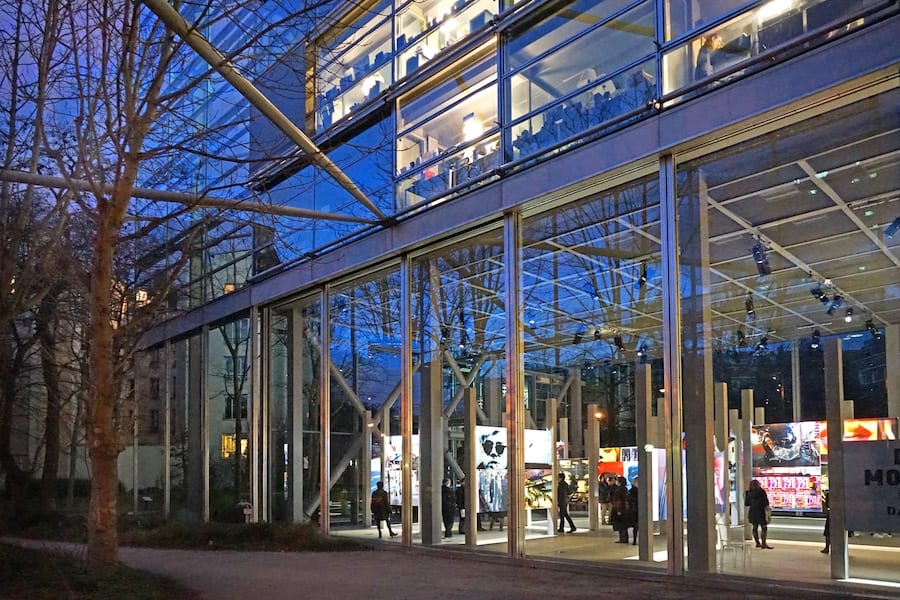
Fondation Cartier
 Highlight of Montparnasse
Highlight of MontparnasseSupporting contemporary art in many luxurious ways
Confront your artistic sensibilities, or maybe just luxuriate at the Fondation Cartier pour l'Art Contemporain, a cornerstone of contemporary art. Housed in an architectural masterpiece by Jean Nouvel that blends verdant surroundings with glass and steel, it showcases diverse exhibitions of both renowned and emerging global artists, alongside commissioned site-specific works. Contemplate today's masterpieces in the foundation's lush garden, designed by Lothar Baumgarten, that acts as a living art installation, complementing cultural programs like concerts, lectures, and the unique "Nomadic Nights" series.
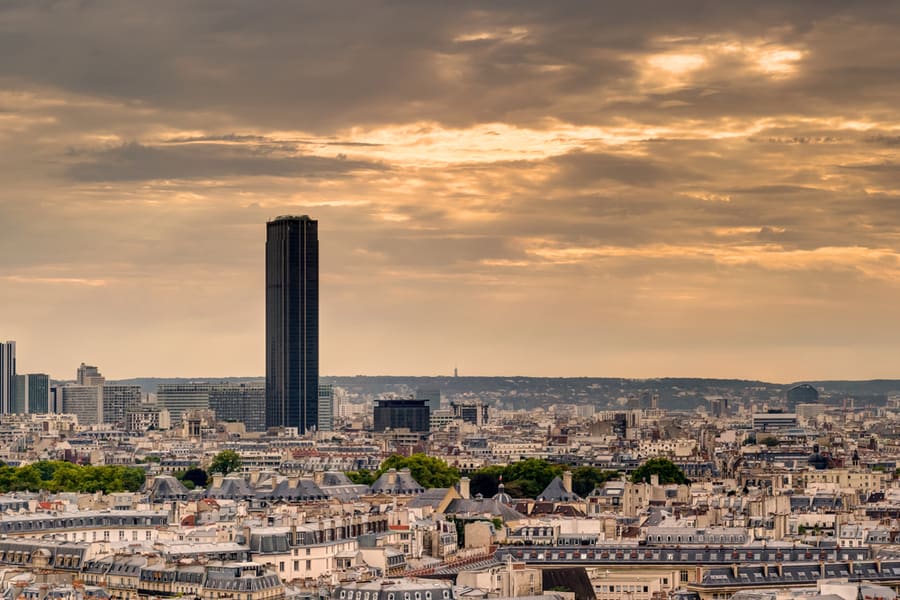
Montparnasse Tower
 Highlight of Montparnasse
Highlight of MontparnasseGet a different perspective from Paris' modern skyscraper
The Montparnasse Tower remains one of Paris' few traditional skyscrapers and with its rare standing offers an unparalleled vantage point from its 56th floor and rooftop terrace. Rising to a height of 210 meters, it punctuates the Parisian skyline and provides breathtaking 360-degree views that stretch out over the city, from the winding Seine to the majestic Eiffel Tower and beyond. Visitors can ascend this towering skyscraper to witness the beauty of Paris from above, capturing the essence of the city's layout and landmarks in a single glance.

Catacombs of Paris - Entrance
 Highlight of Montparnasse
Highlight of MontparnasseWander the corridors of this eerie but matter-of-fact underground filled with skeletal remains.
The Catacombs of Paris offer a disturbing journey beneath the city, where millions of Parisians' remains line the ancient corridors. From the stark warning at the entrance hall, inviting visitors into the Empire of Death, to the dark depths where the Crypt of the Sepulchral Lamp casts a solemn glow, each highlight contributes to the macabre atmosphere. Notable curiosities include the artistic Barrel of Passion, and the intricately carved Sculpture of Port-Mahon, both testaments to the catacombs' dual function as a burial site and a monument to humanity's strangeness.

Bourdelle Museum
 Highlight of Montparnasse
Highlight of MontparnasseImmerse yourself in this a hidden treasure of Parisian art, the original atelier of celebrated sculptor, Antoine Bourdelle.
The Antoine Bourdelle Museum, set in the artist's former studio in Montparnasse, showcases an impressive collection of his sculptures, paintings, and drawings. Here, visitors can experience the authentic atmosphere of Bourdelle's creative space and enjoy the serene garden, which displays his monumental works in bronze and marble. This intimate museum offers a unique glimpse into the artistic process of one of France's great sculptors.

Fondation Cartier
 Highlight of Montparnasse
Highlight of MontparnasseSupporting contemporary art in many luxurious ways
Confront your artistic sensibilities, or maybe just luxuriate at the Fondation Cartier pour l'Art Contemporain, a cornerstone of contemporary art. Housed in an architectural masterpiece by Jean Nouvel that blends verdant surroundings with glass and steel, it showcases diverse exhibitions of both renowned and emerging global artists, alongside commissioned site-specific works. Contemplate today's masterpieces in the foundation's lush garden, designed by Lothar Baumgarten, that acts as a living art installation, complementing cultural programs like concerts, lectures, and the unique "Nomadic Nights" series.

Montparnasse Tower
 Highlight of Montparnasse
Highlight of MontparnasseGet a different perspective from Paris' modern skyscraper
The Montparnasse Tower remains one of Paris' few traditional skyscrapers and with its rare standing offers an unparalleled vantage point from its 56th floor and rooftop terrace. Rising to a height of 210 meters, it punctuates the Parisian skyline and provides breathtaking 360-degree views that stretch out over the city, from the winding Seine to the majestic Eiffel Tower and beyond. Visitors can ascend this towering skyscraper to witness the beauty of Paris from above, capturing the essence of the city's layout and landmarks in a single glance.

Catacombs of Paris - Entrance
 Highlight of Montparnasse
Highlight of MontparnasseWander the corridors of this eerie but matter-of-fact underground filled with skeletal remains.
The Catacombs of Paris offer a disturbing journey beneath the city, where millions of Parisians' remains line the ancient corridors. From the stark warning at the entrance hall, inviting visitors into the Empire of Death, to the dark depths where the Crypt of the Sepulchral Lamp casts a solemn glow, each highlight contributes to the macabre atmosphere. Notable curiosities include the artistic Barrel of Passion, and the intricately carved Sculpture of Port-Mahon, both testaments to the catacombs' dual function as a burial site and a monument to humanity's strangeness.

Bourdelle Museum
 Highlight of Montparnasse
Highlight of MontparnasseImmerse yourself in this a hidden treasure of Parisian art, the original atelier of celebrated sculptor, Antoine Bourdelle.
The Antoine Bourdelle Museum, set in the artist's former studio in Montparnasse, showcases an impressive collection of his sculptures, paintings, and drawings. Here, visitors can experience the authentic atmosphere of Bourdelle's creative space and enjoy the serene garden, which displays his monumental works in bronze and marble. This intimate museum offers a unique glimpse into the artistic process of one of France's great sculptors.
prev
next

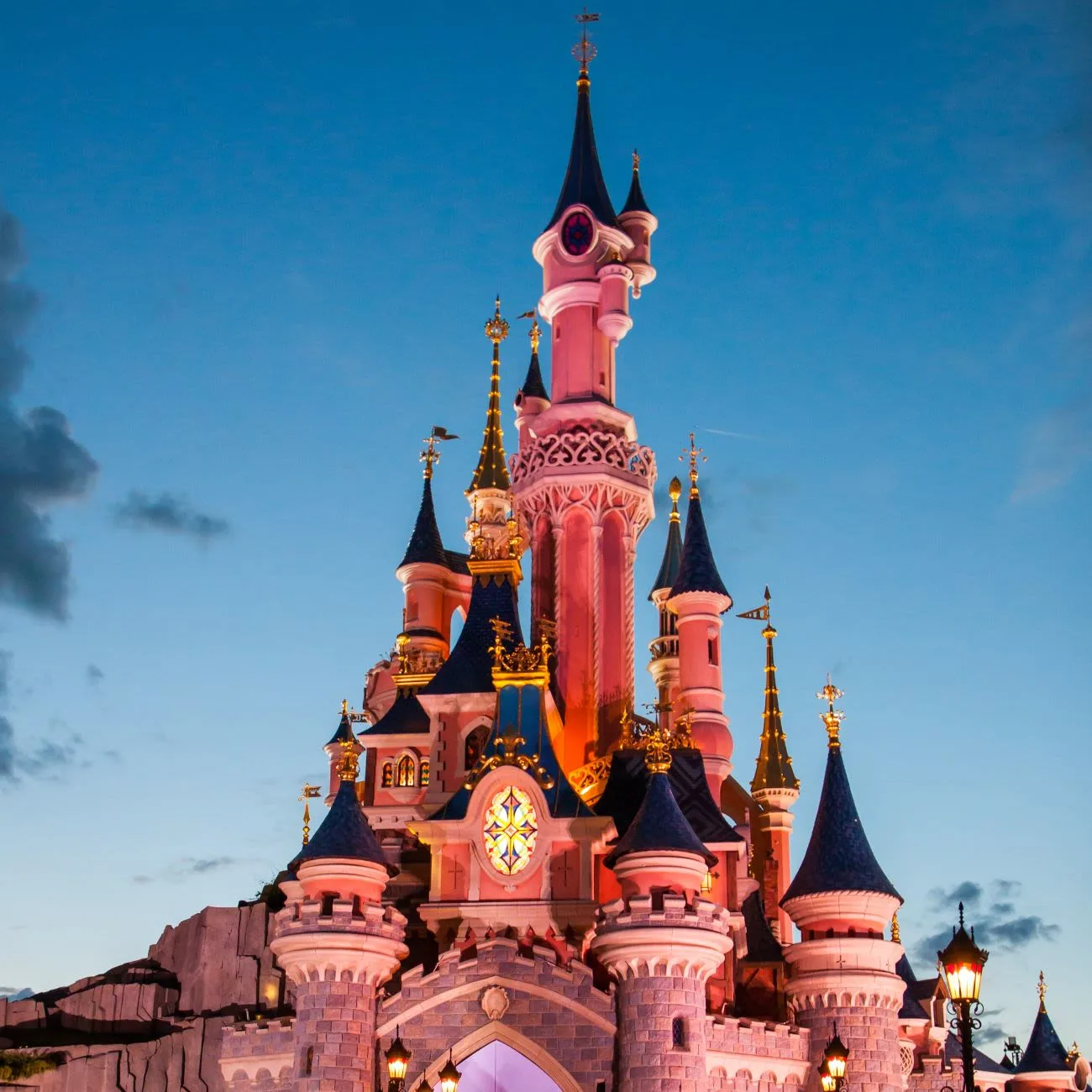
Day 4
Paris
View More
Day 4
Paris

Early Morning to Early Evening
A Magical Visit to Disneyland Paris
Discover the magic of Disneyland Paris, a world where dreams come alive amidst thrilling rides, beloved characters, and dazzling parades across five unique lands. From the fairy-tale splendor of Sleeping Beauty's Castle to the adventures of Frontierland and the creativity of Walt Disney Studios Park, every corner promises unforgettable memories. Embrace the enchantment and make your holiday a Disney dream you will never forget!

Day 4
Paris
View More



Day 5
Paris
View More
Day 5
Paris



Morning/Mid-Day
All You Need is Louvre - A Visit to the World's Largest Art Museum
It might be the greatest art museum in the world; it certainly is the largest with over 380,000 objects; to view every single one for even a minute apiece would take 75 days. And those descriptions still don't do the building and its collection justice. Marvel at treasures inside, including Leonardo Da Vinci's mysterious woman, the Mona Lisa, and everything from an Egyptian masterpiece of mummification to the famed Hellenistic sculpture, Venus de Milo, to patriotic French masterpieces like Delacroix’s Liberty Leading the People. Although the Louvre is vast and ever-crowded, with some strategy and a few helpful tips your visit will take in maximum artworks with minimal hassle.

Day 5
Paris
View More


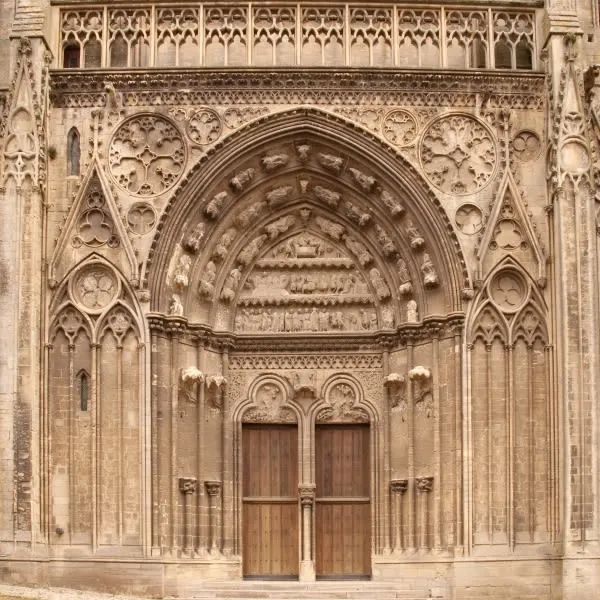
Day 6
Paris to Bayeux
View More
Day 6
Paris to Bayeux





To Be Determined
Rail Drop-Off by Taxi
Paris taxis are generally reliable and honest, so this is cheaper than a pre-arranged transfer. Parisian streets can get very congested, but if you are picked up one hour and 15 minutes prior to departure, you should have plenty of time to catch your train. Instructions for calling a taxi and finding your way around your specific rail station are included in the Full Itinerary.

Day 6
Paris to Bayeux
View More


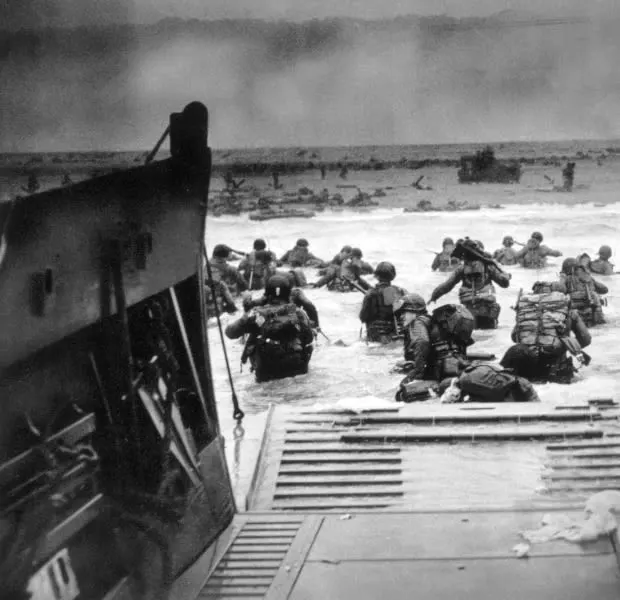
Day 7
Bayeux
View More
Day 7
Bayeux

8:30 AM - 4:30 PM
Private Guided Excursion to the American D-Day Beaches
Discover the somber and honorable history of the Normandy Invasion on this full-day, private, guided tour, exploring the D-Day landing beaches while learning about America's involvement in World War II. The tour takes 9 hours. Your private guide will pick you up and drop you off in your hotel, and includes visits to key places like Omaha Beach, Pointe du Hoc, Sainte-Mère-Église as well as Utah Beach. Your professional and educated private guide will tell you more about the battles fought and sacrifices made at each site. You will also visit the American Cemetery where you'll read the names of soldiers missing in action after the Normandy landing.

Day 7
Bayeux
View More



Day 8
Bayeux
View More
Day 8
Bayeux


Morning/Mid-Day
View the Wondrous Bayeux Tapestry and the Museum of Art and History Bayeux
How will you weave your story of seeing the Bayeux Tapestry? Depicting William of Normandy's conquest of England in 1066, the tapestry - which is actually an elaborate embroidery - is thought to be nearly 1000 years old and brings the medieval era to life. A close inspection might change the way you look at Normandy and England and their closely braided histories. If Bayeux's history draws you in, you can explore the town's past even further at the MAHB Museum of Art and History Baron Gérard.

Bayeux Tapestry
This 11th-century tapestry visually recounts the details of the Battle of Hastings in 1066. This battle led to the Norman conquest of England and changed the course of British history and by proxy, the history of much of the world. But that is a much longer story than the t wo-hundred and twenty-four feet (68,3m) of the tapestry, filled with incredible, and sometimes blood-curdling, details.
Show More

Bayeux Tapestry
This 11th-century tapestry visually recounts the details of the Battle of Hastings in 1066. This battle led to the Norman conquest of England and changed the course of British history and by proxy, the history of much of the world. But that is a much longer story than the t wo-hundred and twenty-four feet (68,3m) of the tapestry, filled with incredible, and sometimes blood-curdling, details.
Show More

Bayeux Tapestry
This 11th-century tapestry visually recounts the details of the Battle of Hastings in 1066. This battle led to the Norman conquest of England and changed the course of British history and by proxy, the history of much of the world. But that is a much longer story than the t wo-hundred and twenty-four feet (68,3m) of the tapestry, filled with incredible, and sometimes blood-curdling, details.
Show More

Bayeux Tapestry
This 11th-century tapestry visually recounts the details of the Battle of Hastings in 1066. This battle led to the Norman conquest of England and changed the course of British history and by proxy, the history of much of the world. But that is a much longer story than the t wo-hundred and twenty-four feet (68,3m) of the tapestry, filled with incredible, and sometimes blood-curdling, details.
Show More

Bayeux Tapestry
This 11th-century tapestry visually recounts the details of the Battle of Hastings in 1066. This battle led to the Norman conquest of England and changed the course of British history and by proxy, the history of much of the world. But that is a much longer story than the t wo-hundred and twenty-four feet (68,3m) of the tapestry, filled with incredible, and sometimes blood-curdling, details.
Show More
prev
next

Day 8
Bayeux
View More

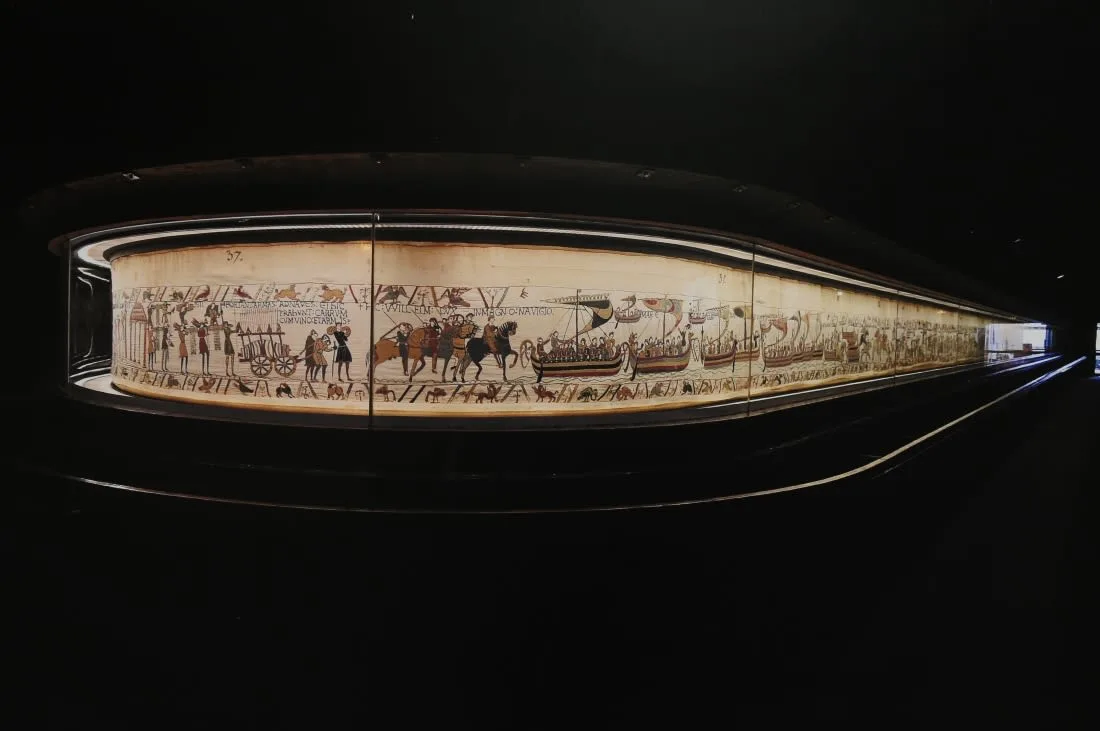
Bayeux Tapestry
 Highlight of Bayeux Tapestry Museum and Museum of Art and History
Highlight of Bayeux Tapestry Museum and Museum of Art and HistoryThis 11th-century tapestry visually recounts the details of the Battle of Hastings in 1066. This battle led to the Norman conquest of England and changed the course of British history and by proxy, the history of much of the world. But that is a much longer story than the t wo-hundred and twenty-four feet (68,3m) of the tapestry, filled with incredible, and sometimes blood-curdling, details.

Bayeux Tapestry
 Highlight of Bayeux Tapestry Museum and Museum of Art and History
Highlight of Bayeux Tapestry Museum and Museum of Art and HistoryThis 11th-century tapestry visually recounts the details of the Battle of Hastings in 1066. This battle led to the Norman conquest of England and changed the course of British history and by proxy, the history of much of the world. But that is a much longer story than the t wo-hundred and twenty-four feet (68,3m) of the tapestry, filled with incredible, and sometimes blood-curdling, details.

Bayeux Tapestry
 Highlight of Bayeux Tapestry Museum and Museum of Art and History
Highlight of Bayeux Tapestry Museum and Museum of Art and HistoryThis 11th-century tapestry visually recounts the details of the Battle of Hastings in 1066. This battle led to the Norman conquest of England and changed the course of British history and by proxy, the history of much of the world. But that is a much longer story than the t wo-hundred and twenty-four feet (68,3m) of the tapestry, filled with incredible, and sometimes blood-curdling, details.

Bayeux Tapestry
 Highlight of Bayeux Tapestry Museum and Museum of Art and History
Highlight of Bayeux Tapestry Museum and Museum of Art and HistoryThis 11th-century tapestry visually recounts the details of the Battle of Hastings in 1066. This battle led to the Norman conquest of England and changed the course of British history and by proxy, the history of much of the world. But that is a much longer story than the t wo-hundred and twenty-four feet (68,3m) of the tapestry, filled with incredible, and sometimes blood-curdling, details.

Bayeux Tapestry
 Highlight of Bayeux Tapestry Museum and Museum of Art and History
Highlight of Bayeux Tapestry Museum and Museum of Art and HistoryThis 11th-century tapestry visually recounts the details of the Battle of Hastings in 1066. This battle led to the Norman conquest of England and changed the course of British history and by proxy, the history of much of the world. But that is a much longer story than the t wo-hundred and twenty-four feet (68,3m) of the tapestry, filled with incredible, and sometimes blood-curdling, details.
prev
next

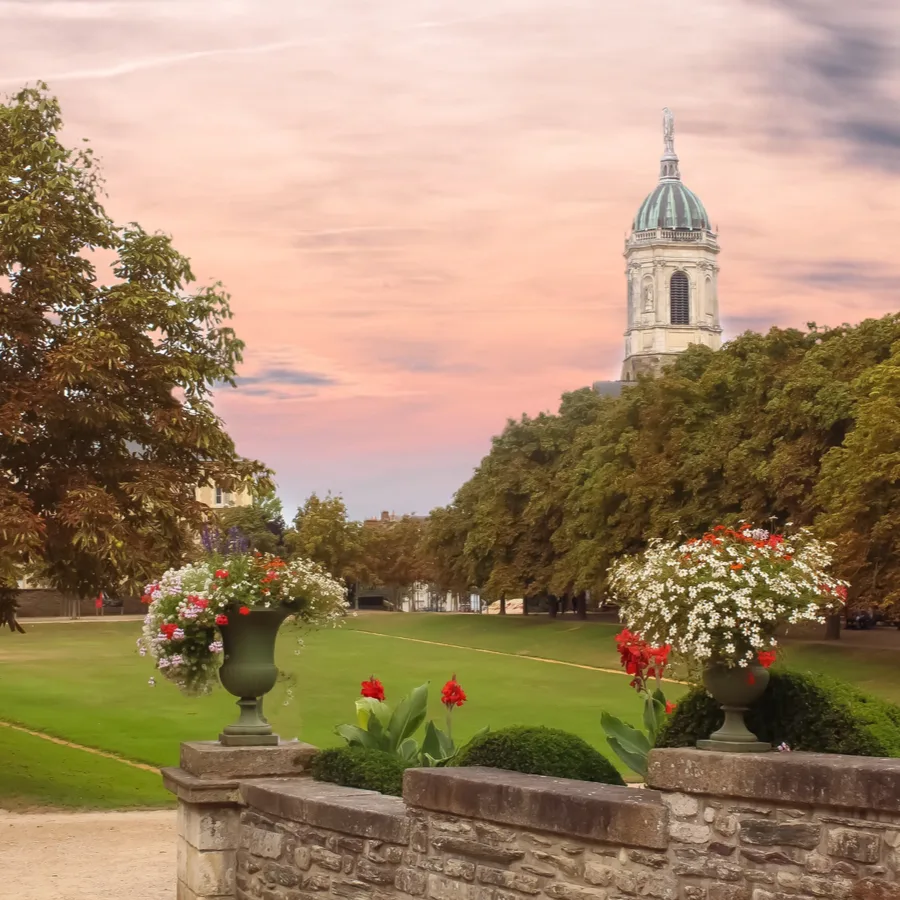
Day 9
Bayeux to Rennes
View More
Day 9
Bayeux to Rennes


9:30 AM - 2:00 PM
Private Shuttle from Bayeux to Rennes with Stop in Mont-St.-Michel
Your own, personal, English-speaking driver will pick you up promptly at the designated time from your hotel. This is a pre-paid transfer, so you only need to sit back and enjoy the ride while your driver answers any questions you may have. While the drive takes about two hours, you have the opportunity for a three-hour self-guided stop at the breathtaking Mont-St.-Michel. One of the most evocative towns in France, this island / abbey / fortress repelled medieval England but has has captured thousands of hearts with its ambiance and views towards the sea. Should you prefer a different stop, we can also suggest other options, Fougères and its castle, or Granville.

Mont-St.-Michel
Step foot upon Mont-Saint-Michel, a stunning village and UNESCO World Heritage Site that attracts visitors the world over for its dramatic setting on a rocky islet surrounded by powerful tides. The highlight, the Abbey of Mont-Saint-Michel, stands as a testament to medieval architecture, and withstood both seiges of the Hundred Years' War. Adored by the French for centuries,Mont-St. Micheletrances visitors with its natural beauty, historical richesse , and architecture, its winding streets and panoramic views transporting you to another era.
Show More

Mont-St.-Michel
Step foot upon Mont-Saint-Michel, a stunning village and UNESCO World Heritage Site that attracts visitors the world over for its dramatic setting on a rocky islet surrounded by powerful tides. The highlight, the Abbey of Mont-Saint-Michel, stands as a testament to medieval architecture, and withstood both seiges of the Hundred Years' War. Adored by the French for centuries,Mont-St. Micheletrances visitors with its natural beauty, historical richesse , and architecture, its winding streets and panoramic views transporting you to another era.
Show More

Mont-St.-Michel
Step foot upon Mont-Saint-Michel, a stunning village and UNESCO World Heritage Site that attracts visitors the world over for its dramatic setting on a rocky islet surrounded by powerful tides. The highlight, the Abbey of Mont-Saint-Michel, stands as a testament to medieval architecture, and withstood both seiges of the Hundred Years' War. Adored by the French for centuries,Mont-St. Micheletrances visitors with its natural beauty, historical richesse , and architecture, its winding streets and panoramic views transporting you to another era.
Show More

Mont-St.-Michel
Step foot upon Mont-Saint-Michel, a stunning village and UNESCO World Heritage Site that attracts visitors the world over for its dramatic setting on a rocky islet surrounded by powerful tides. The highlight, the Abbey of Mont-Saint-Michel, stands as a testament to medieval architecture, and withstood both seiges of the Hundred Years' War. Adored by the French for centuries,Mont-St. Micheletrances visitors with its natural beauty, historical richesse , and architecture, its winding streets and panoramic views transporting you to another era.
Show More

Mont-St.-Michel
Step foot upon Mont-Saint-Michel, a stunning village and UNESCO World Heritage Site that attracts visitors the world over for its dramatic setting on a rocky islet surrounded by powerful tides. The highlight, the Abbey of Mont-Saint-Michel, stands as a testament to medieval architecture, and withstood both seiges of the Hundred Years' War. Adored by the French for centuries,Mont-St. Micheletrances visitors with its natural beauty, historical richesse , and architecture, its winding streets and panoramic views transporting you to another era.
Show More
prev
next

Day 9
Bayeux to Rennes
View More

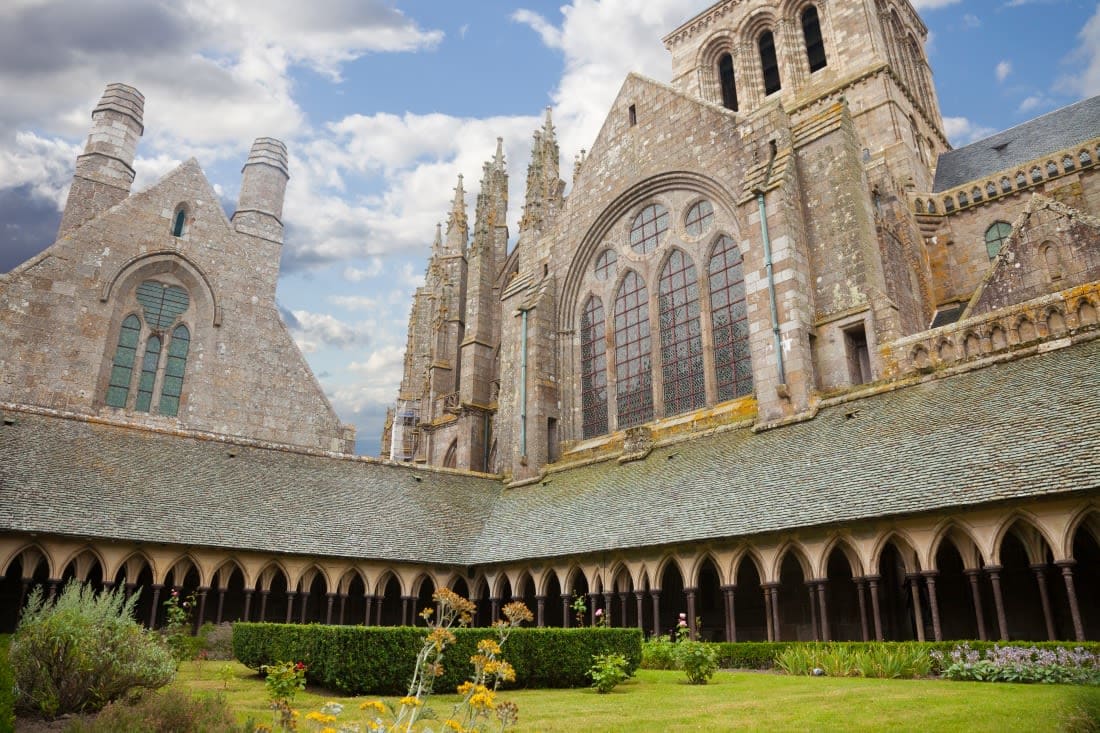
Mont-St.-Michel
 Highlight of Shuttle to Rennes via Mt.-St.-Michele
Highlight of Shuttle to Rennes via Mt.-St.-MicheleStep foot upon Mont-Saint-Michel, a stunning village and UNESCO World Heritage Site that attracts visitors the world over for its dramatic setting on a rocky islet surrounded by powerful tides. The highlight, the Abbey of Mont-Saint-Michel, stands as a testament to medieval architecture, and withstood both seiges of the Hundred Years' War. Adored by the French for centuries,Mont-St. Micheletrances visitors with its natural beauty, historical richesse , and architecture, its winding streets and panoramic views transporting you to another era.

Mont-St.-Michel
 Highlight of Shuttle to Rennes via Mt.-St.-Michele
Highlight of Shuttle to Rennes via Mt.-St.-MicheleStep foot upon Mont-Saint-Michel, a stunning village and UNESCO World Heritage Site that attracts visitors the world over for its dramatic setting on a rocky islet surrounded by powerful tides. The highlight, the Abbey of Mont-Saint-Michel, stands as a testament to medieval architecture, and withstood both seiges of the Hundred Years' War. Adored by the French for centuries,Mont-St. Micheletrances visitors with its natural beauty, historical richesse , and architecture, its winding streets and panoramic views transporting you to another era.

Mont-St.-Michel
 Highlight of Shuttle to Rennes via Mt.-St.-Michele
Highlight of Shuttle to Rennes via Mt.-St.-MicheleStep foot upon Mont-Saint-Michel, a stunning village and UNESCO World Heritage Site that attracts visitors the world over for its dramatic setting on a rocky islet surrounded by powerful tides. The highlight, the Abbey of Mont-Saint-Michel, stands as a testament to medieval architecture, and withstood both seiges of the Hundred Years' War. Adored by the French for centuries,Mont-St. Micheletrances visitors with its natural beauty, historical richesse , and architecture, its winding streets and panoramic views transporting you to another era.

Mont-St.-Michel
 Highlight of Shuttle to Rennes via Mt.-St.-Michele
Highlight of Shuttle to Rennes via Mt.-St.-MicheleStep foot upon Mont-Saint-Michel, a stunning village and UNESCO World Heritage Site that attracts visitors the world over for its dramatic setting on a rocky islet surrounded by powerful tides. The highlight, the Abbey of Mont-Saint-Michel, stands as a testament to medieval architecture, and withstood both seiges of the Hundred Years' War. Adored by the French for centuries,Mont-St. Micheletrances visitors with its natural beauty, historical richesse , and architecture, its winding streets and panoramic views transporting you to another era.

Mont-St.-Michel
 Highlight of Shuttle to Rennes via Mt.-St.-Michele
Highlight of Shuttle to Rennes via Mt.-St.-MicheleStep foot upon Mont-Saint-Michel, a stunning village and UNESCO World Heritage Site that attracts visitors the world over for its dramatic setting on a rocky islet surrounded by powerful tides. The highlight, the Abbey of Mont-Saint-Michel, stands as a testament to medieval architecture, and withstood both seiges of the Hundred Years' War. Adored by the French for centuries,Mont-St. Micheletrances visitors with its natural beauty, historical richesse , and architecture, its winding streets and panoramic views transporting you to another era.
prev
next

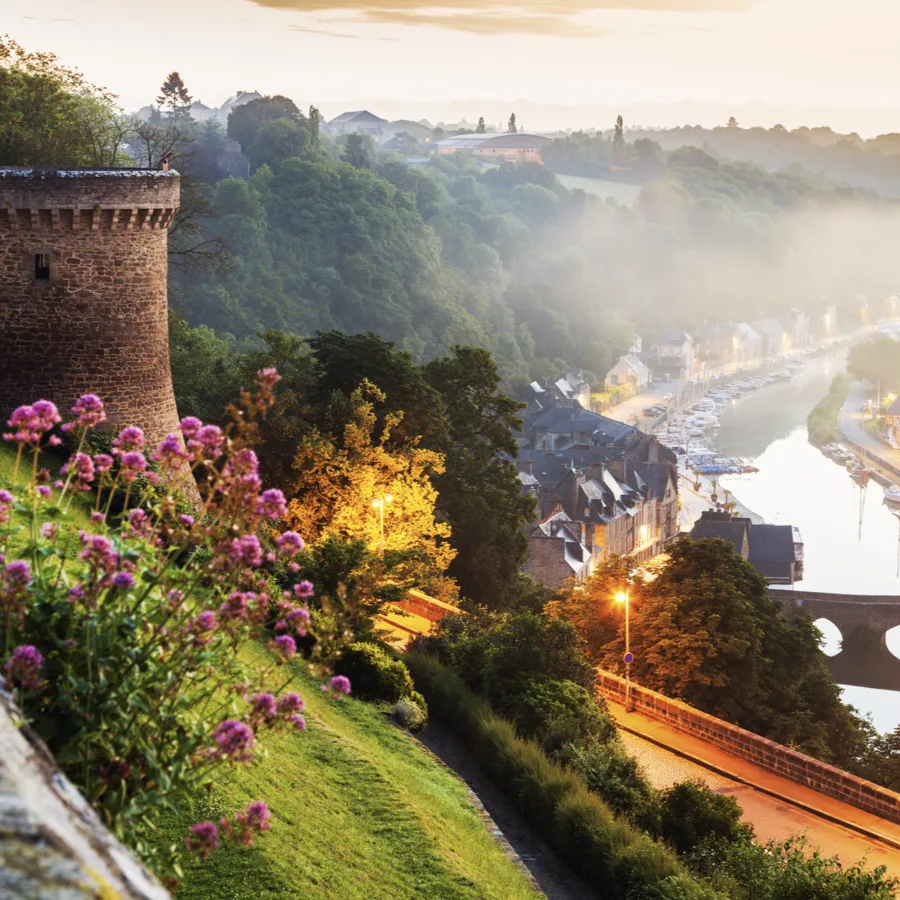
Day 10
Rennes
View More
Day 10
Rennes


Morning to Early Evening
Self-Guided Excursion to Dinan
Dinan guards its medieval heart of half-timbered homes and winding streets. An important crossing over the Rance River since time immemorial, written documents first mention the city in the 11th century, and its warriors even appear in the Bayeux Tapestry. Noteworthy sites include the Basilique St-Sauveur, the 14th-century Château de Dinan, and the artisan-lined Rue du Jerzual. The town's panoramic views and market in Place du Guesclin offer a taste of local life amid the well-preserved homes of a bygone era.

Day 10
Rennes
View More


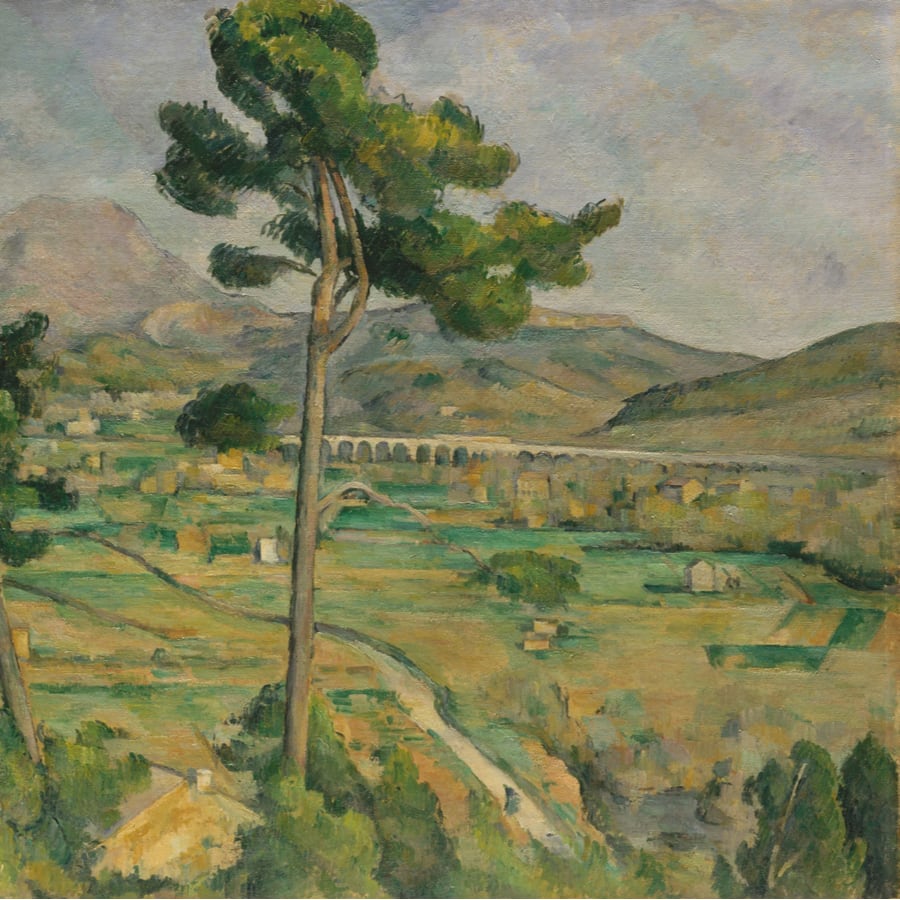
Day 11
Rennes to Aix en Provence
View More
Day 11
Rennes to Aix en Provence





To Be Determined
Airport Dropoff by Taxi
Rennes taxis are generally reliable and honest, so taking a taxi is cheaper than a pre-arranged transfer. Your hotel will be happy to arrange a pick up for you. If you are picked up about 2 hours and 45 min before your departure time, you should arrive at the airport with just under two and a half hours to spare. If you are leaving during rush hour, you may want to budget an extra twenty minutes or so. The Full Itinerary also contains alternative instructions on taking the bus/train to the airport.

Day 11
Rennes to Aix en Provence
View More


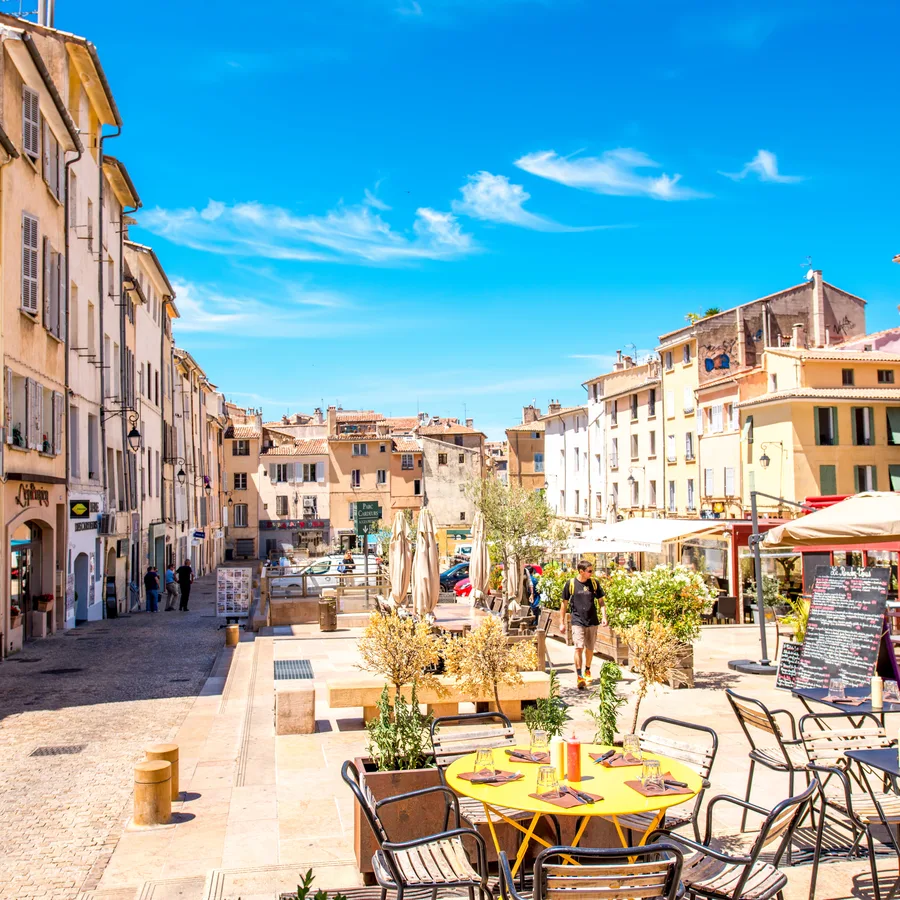
Day 12
Aix en Provence
View More
Day 12
Aix en Provence


9:00 AM - 11:00 AM
Private Walking Tour of Aix-en-Provence
Discover Aix-en-Provence, widely considered one of the most attractive cities in the South of France, on this 3-hour walking tour. Fountains and statues decorate the city, a tradition dating back to the Roman Empire. The city takes its name from the Roman word for "water." At a leisurely pace, you’ll soak up the history flowing through this city before learning about the Impressionist painter Paul Cézanne. The ‘father of modern art’ was born and died here, and spent his life desperately trying to capture the nearby Mount Sainte-Victoire in his paintings.

Day 12
Aix en Provence
View More



Day 13
Aix en Provence
View More
Day 13
Aix en Provence

Early Morning to Late Afternoon
A Self- Guided Jaunt through Avignon
Avignon boasts a particular medieval history as the seat of the Roman Catholic church in the 14th century. Its grandeur, though illustrious, is tempered by the Provençal sun and wind, and the sometimes irreverent Festival d' Avignon, a summer theather event that draws crowds from all of France. Highlights of a visit include the Palais des Papes, a massive, Gothic structure fit for a pope, the Pont d' Avignon which will make you want to dan-ce, dan-ce, and les Halles, an exceptional food market with a verdant exterior.

Palais des Papes
This wasn't a home-away-from-home; this was home!
Show More

Bridge St. Bénézet (Le Pont d' Avignon)
This Bridge Doesn't Work, but Millions Have Walked upon It All the Same
Show More

Les Halles d' Avignon
Admire the living wall outside before tasting the best of Provence within.
Show More

Avignon Cathedral
This Cathedral Provides Shelter From the Heat of the Day and Many Other Respites...
Show More

Jardin des doms
Take Aristocratic Views of Provence and the Papal Palace
Show More

Palais des Papes
This wasn't a home-away-from-home; this was home!
Show More

Bridge St. Bénézet (Le Pont d' Avignon)
This Bridge Doesn't Work, but Millions Have Walked upon It All the Same
Show More

Les Halles d' Avignon
Admire the living wall outside before tasting the best of Provence within.
Show More

Avignon Cathedral
This Cathedral Provides Shelter From the Heat of the Day and Many Other Respites...
Show More

Jardin des doms
Take Aristocratic Views of Provence and the Papal Palace
Show More

Palais des Papes
This wasn't a home-away-from-home; this was home!
Show More
prev
next

Day 13
Aix en Provence
View More

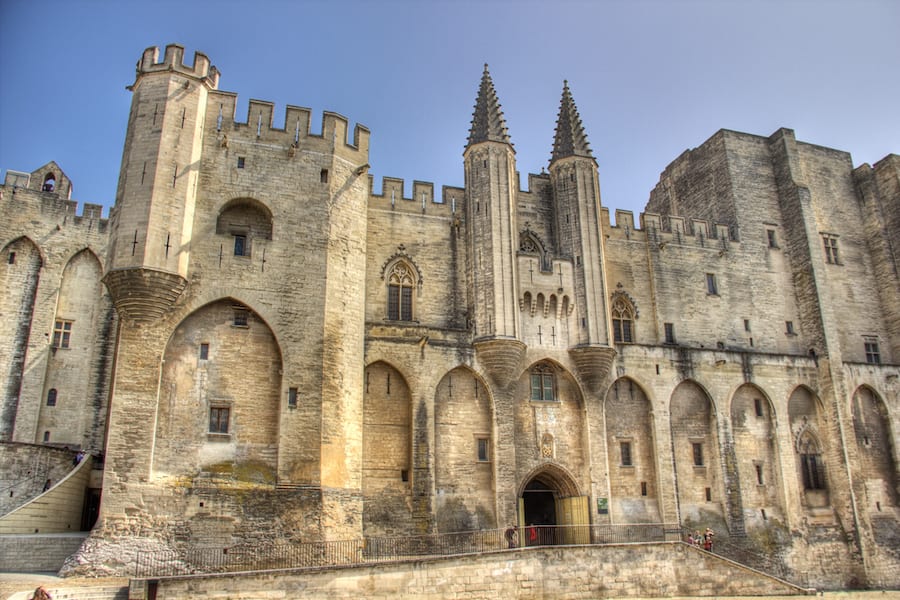
Palais des Papes
 Highlight of Excursion to Avignon
Highlight of Excursion to AvignonThis wasn't a home-away-from-home; this was home!
From 1305-1378 the Roman Catholic Church was ruled from... Avignon. Theocratic intrigue in Rome led to the move, and the popes here enjoyed relative safety, and a view of a better river (The Rhone River of Avignon is much prettier than Rome's Tiber). After St. Catherine of Siena convinced a pope to return to Rome, and the inevitable disputes ended, the palace gradually fell into disrepair, and the palace was even used as a barracks for Napoleon's armies. Today, one can marvel at the architecture, and learn a thing or two about the dramas of centuries past. A visit is a beautiful education...
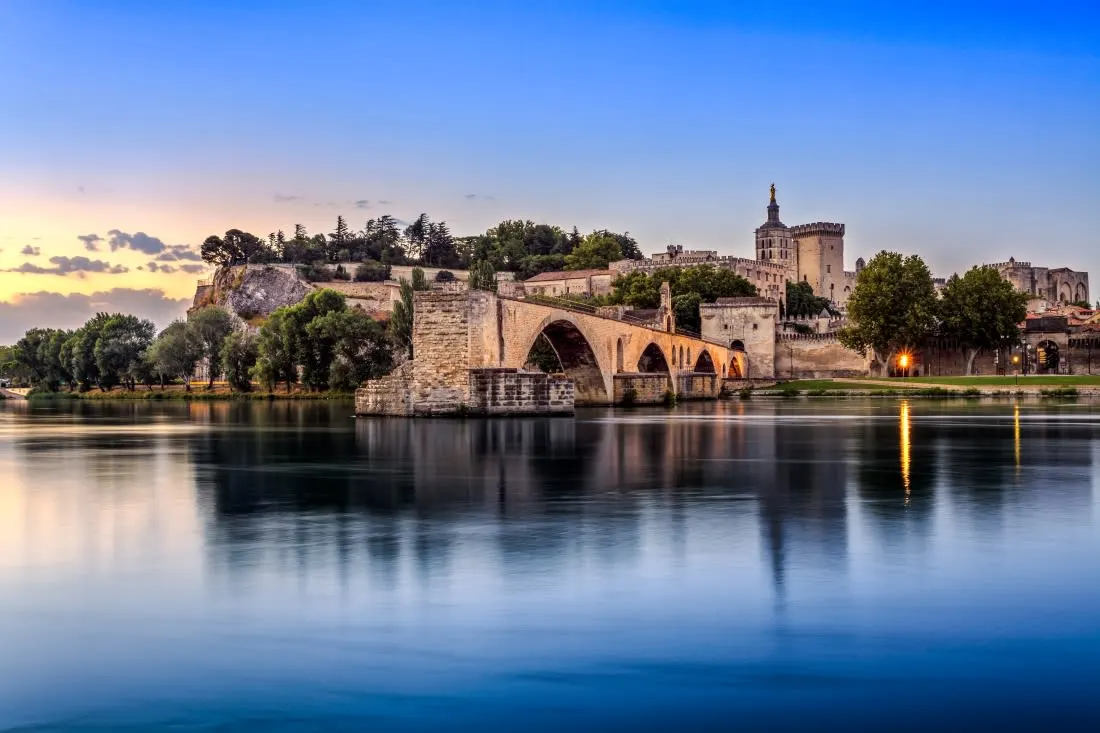
Bridge St. Bénézet (Le Pont d' Avignon)
 Highlight of Excursion to Avignon
Highlight of Excursion to AvignonThis Bridge Doesn't Work, but Millions Have Walked upon It All the Same
The St. Bénézet Bridge, known affectionately as the Pont d' Avignon (Bridge of Avignon) has spent much of its existence a ruin. From the 1200s until the 1700s, when the Rhone River flooded, it often destroyed the bridge, originally 900m (nearly 3000 feet). The city finally had enough and left it. And then it became a symbol of the city and started drawing people from around the world. Brilliant! There is something romantic to it, to walk out along it's narrow width at dusk towards the middle of the Rhone. It's so beautiful it might make you want to danse... Sur le pont d' Avignon L'on y danse, l'on y danse...

Les Halles d' Avignon
 Highlight of Excursion to Avignon
Highlight of Excursion to AvignonAdmire the living wall outside before tasting the best of Provence within.
Spend some time to assemble your own lunch or dinner with help from the sumptuous stalls at Avignon's Halles. Fruits, vegetables, cheeses and meats will all come and go with the seasons. An early spring visit here can proffer the delicious strawberries from nearrby Carpentras, and a midsummer exploration will deliver you the incomparable melon d' Cavaillon. Pair those with some jambon or a fresh Provençal goat cheese, pick up a bottle of rose from Tavel, and you are well on your way to gourmet heaven!

Avignon Cathedral
 Highlight of Excursion to Avignon
Highlight of Excursion to AvignonThis Cathedral Provides Shelter From the Heat of the Day and Many Other Respites...
... Dating back to the 12th century, this Romanesque cathedral is renowned for its striking architectural features, including a beautifully decorated facade and a prominent gold-leaf statue of the Virgin Mary that crowns its bell tower. Inside, the cathedral houses an array of religious art, significant ecclesiastical items, and the tombs of several Avignon popes, reflecting its central role in the history of the Avignon Papacy. But given that history, a simplicity remains, a elegance hard-won through trials and tribulations.

Jardin des doms
 Highlight of Excursion to Avignon
Highlight of Excursion to AvignonTake Aristocratic Views of Provence and the Papal Palace
Perched atop a rocky outcrop, Le Jardin des Doms overlooks The Palais des Papes and Notre Dame (of Avignon, mind you) on one side and panoramas of the Provençal countryside on the other. Established in the 19th century, this verdant park is a welcomed retreat within the walled city with its limestone pathways, majestic trees, and tranquil ponds. These elements add to the cool and restful atmosphere of the park.

Palais des Papes
 Highlight of Excursion to Avignon
Highlight of Excursion to AvignonThis wasn't a home-away-from-home; this was home!
From 1305-1378 the Roman Catholic Church was ruled from... Avignon. Theocratic intrigue in Rome led to the move, and the popes here enjoyed relative safety, and a view of a better river (The Rhone River of Avignon is much prettier than Rome's Tiber). After St. Catherine of Siena convinced a pope to return to Rome, and the inevitable disputes ended, the palace gradually fell into disrepair, and the palace was even used as a barracks for Napoleon's armies. Today, one can marvel at the architecture, and learn a thing or two about the dramas of centuries past. A visit is a beautiful education...

Bridge St. Bénézet (Le Pont d' Avignon)
 Highlight of Excursion to Avignon
Highlight of Excursion to AvignonThis Bridge Doesn't Work, but Millions Have Walked upon It All the Same
The St. Bénézet Bridge, known affectionately as the Pont d' Avignon (Bridge of Avignon) has spent much of its existence a ruin. From the 1200s until the 1700s, when the Rhone River flooded, it often destroyed the bridge, originally 900m (nearly 3000 feet). The city finally had enough and left it. And then it became a symbol of the city and started drawing people from around the world. Brilliant! There is something romantic to it, to walk out along it's narrow width at dusk towards the middle of the Rhone. It's so beautiful it might make you want to danse... Sur le pont d' Avignon L'on y danse, l'on y danse...

Les Halles d' Avignon
 Highlight of Excursion to Avignon
Highlight of Excursion to AvignonAdmire the living wall outside before tasting the best of Provence within.
Spend some time to assemble your own lunch or dinner with help from the sumptuous stalls at Avignon's Halles. Fruits, vegetables, cheeses and meats will all come and go with the seasons. An early spring visit here can proffer the delicious strawberries from nearrby Carpentras, and a midsummer exploration will deliver you the incomparable melon d' Cavaillon. Pair those with some jambon or a fresh Provençal goat cheese, pick up a bottle of rose from Tavel, and you are well on your way to gourmet heaven!

Avignon Cathedral
 Highlight of Excursion to Avignon
Highlight of Excursion to AvignonThis Cathedral Provides Shelter From the Heat of the Day and Many Other Respites...
... Dating back to the 12th century, this Romanesque cathedral is renowned for its striking architectural features, including a beautifully decorated facade and a prominent gold-leaf statue of the Virgin Mary that crowns its bell tower. Inside, the cathedral houses an array of religious art, significant ecclesiastical items, and the tombs of several Avignon popes, reflecting its central role in the history of the Avignon Papacy. But given that history, a simplicity remains, a elegance hard-won through trials and tribulations.

Jardin des doms
 Highlight of Excursion to Avignon
Highlight of Excursion to AvignonTake Aristocratic Views of Provence and the Papal Palace
Perched atop a rocky outcrop, Le Jardin des Doms overlooks The Palais des Papes and Notre Dame (of Avignon, mind you) on one side and panoramas of the Provençal countryside on the other. Established in the 19th century, this verdant park is a welcomed retreat within the walled city with its limestone pathways, majestic trees, and tranquil ponds. These elements add to the cool and restful atmosphere of the park.

Palais des Papes
 Highlight of Excursion to Avignon
Highlight of Excursion to AvignonThis wasn't a home-away-from-home; this was home!
From 1305-1378 the Roman Catholic Church was ruled from... Avignon. Theocratic intrigue in Rome led to the move, and the popes here enjoyed relative safety, and a view of a better river (The Rhone River of Avignon is much prettier than Rome's Tiber). After St. Catherine of Siena convinced a pope to return to Rome, and the inevitable disputes ended, the palace gradually fell into disrepair, and the palace was even used as a barracks for Napoleon's armies. Today, one can marvel at the architecture, and learn a thing or two about the dramas of centuries past. A visit is a beautiful education...
prev
next

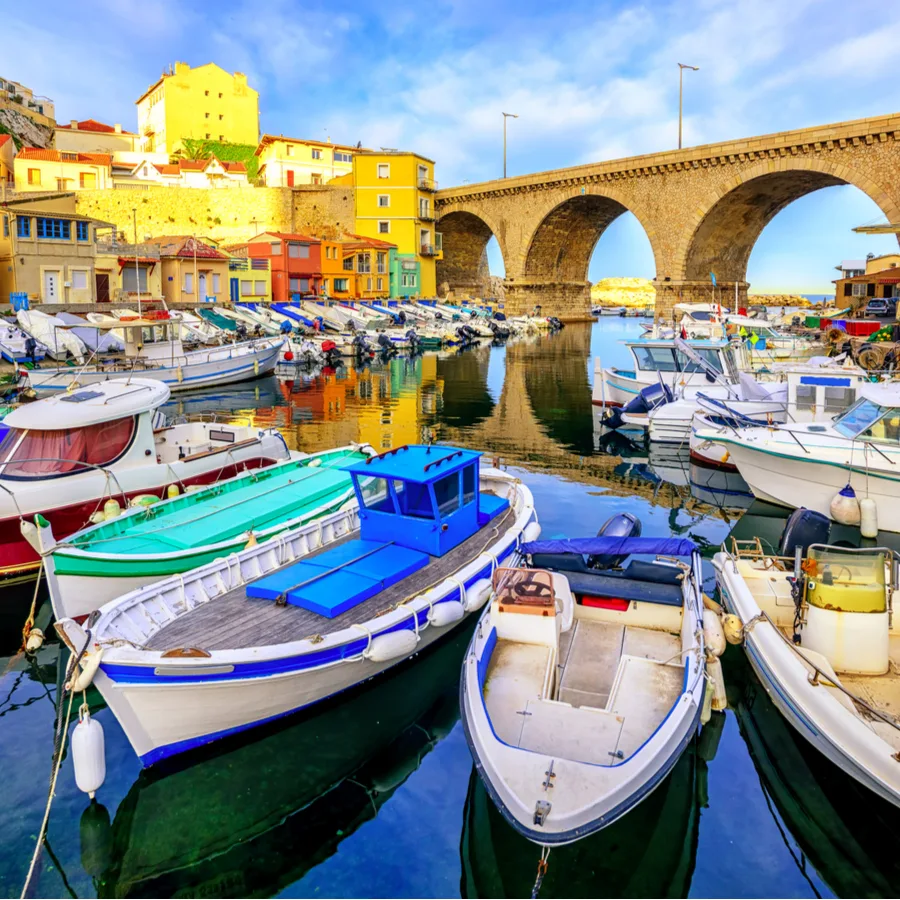
Day 14
Aix en Provence
View More
Day 14
Aix en Provence


Early Morning to Afternoon
Self-Guided Excursion to Marseille
Greeks settled here in 600BC, and the port hasn't stopped since. Walk through at least 2600 years of history, try fresh fish, and get a feel for a French city that revels in its distance (geographically, culturally, gastronomically) from Paris. Grittier, louder, but no less charming, Marseille will pleasantly shock you with its energy and breathtaking panoramas of itself and the Mediterranean sea. And should you long for the crash of waves upon cliffs, the inestimably beautiful National Park of the Calanques.

Marseille - Vieux Port
Walk in the Footsteps of Ancient Greeks at This 2600-year-old Port
Show More

Marseille Notre Dame
Take a Short Pilgrimage, If Just for the Views!
Show More

Marseille MuCEM
Dive into the Cultures of the Mediterranean Sea
Show More

Marseille - Vieux Port
Walk in the Footsteps of Ancient Greeks at This 2600-year-old Port
Show More

Marseille Notre Dame
Take a Short Pilgrimage, If Just for the Views!
Show More

Marseille MuCEM
Dive into the Cultures of the Mediterranean Sea
Show More

Marseille - Vieux Port
Walk in the Footsteps of Ancient Greeks at This 2600-year-old Port
Show More
prev
next

Day 14
Aix en Provence
View More

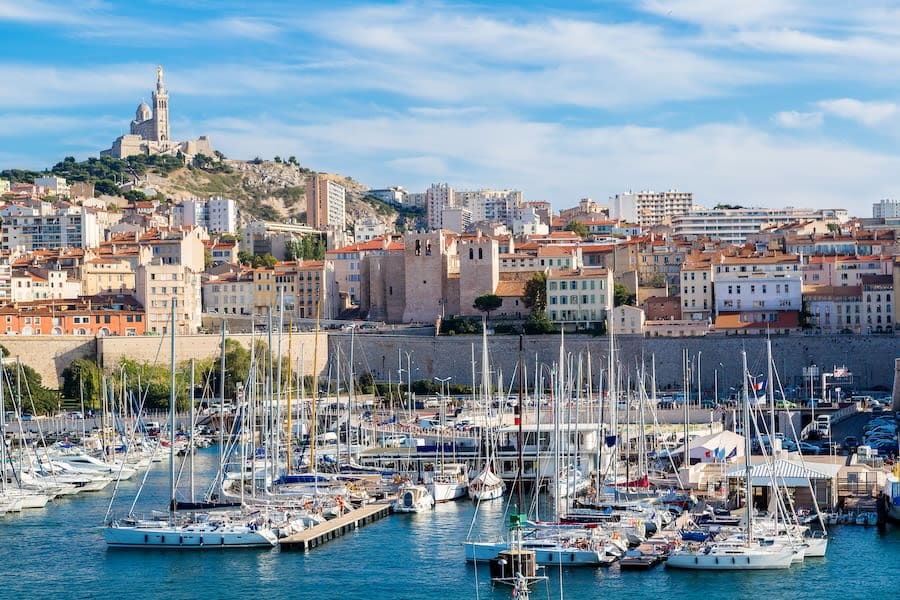
Marseille - Vieux Port
 Highlight of Excursion to Marseille
Highlight of Excursion to MarseilleWalk in the Footsteps of Ancient Greeks at This 2600-year-old Port
The Vieux Port of Marseille is, in a sense, where France began its long march through Western Civilization, as Greek settlers arrived here in 600BC. Since that time at least, it has been a port, with countless ships arriving and countless feet stepping upon its piers. Surrounded by historic fortifications, such as Fort Saint-Nicolas and Fort Saint-Jean, the port today is as it has often been, a lively area filled with fishing boats, yachts, and vessels of all sizes. Visitors can stroll along the quayside, indulge in seafood at the numerous restaurants, or simply enjoy the panoramic views of the Mediterranean Sea. The daily fish market on the Quai des Belges offers a glimpse into the port's bustling trade activities.

Marseille Notre Dame
 Highlight of Excursion to Marseille
Highlight of Excursion to MarseilleTake a Short Pilgrimage, If Just for the Views!
The basillica of Notre-Dame de la Garde, often referred to as "La Bonne Mère," keeps its protective watch over the city. This iconic symbol, situated on a limestone outcrop, offers panoramic views of Marseille and the Mediterranean Sea. Known for its mix of Romanesque and Byzantine styles, the basilica boasts intricate mosaics and a prominent golden statue of the Virgin Mary on its bell tower. It is a place of pilgrimage and reflection.

Marseille MuCEM
 Highlight of Excursion to Marseille
Highlight of Excursion to MarseilleDive into the Cultures of the Mediterranean Sea
The MuCEM (Musée des Civilisations de l'Europe et de la Méditerranée) in Marseille stands as a monumental celebration of Mediterranean cultures, seamlessly blending contemporary architecture with centuries-old heritage. Situated at the waterfront, this striking museum designed by architect Rudy Ricciotti, connected to the historic Fort Saint-Jean by an elegant footbridge, invites exploration into the diverse and complex tapestry of Mediterranean civilizations. Through its innovative exhibitions, the MuCEM profoundly investigates the historical, cultural, and social dynamics of the Mediterranean region through a rich collection that spans from ancient artifacts to modern art. The museum offers breathtaking views of its very subject, the Mediterranean Sea.

Marseille - Vieux Port
 Highlight of Excursion to Marseille
Highlight of Excursion to MarseilleWalk in the Footsteps of Ancient Greeks at This 2600-year-old Port
The Vieux Port of Marseille is, in a sense, where France began its long march through Western Civilization, as Greek settlers arrived here in 600BC. Since that time at least, it has been a port, with countless ships arriving and countless feet stepping upon its piers. Surrounded by historic fortifications, such as Fort Saint-Nicolas and Fort Saint-Jean, the port today is as it has often been, a lively area filled with fishing boats, yachts, and vessels of all sizes. Visitors can stroll along the quayside, indulge in seafood at the numerous restaurants, or simply enjoy the panoramic views of the Mediterranean Sea. The daily fish market on the Quai des Belges offers a glimpse into the port's bustling trade activities.

Marseille Notre Dame
 Highlight of Excursion to Marseille
Highlight of Excursion to MarseilleTake a Short Pilgrimage, If Just for the Views!
The basillica of Notre-Dame de la Garde, often referred to as "La Bonne Mère," keeps its protective watch over the city. This iconic symbol, situated on a limestone outcrop, offers panoramic views of Marseille and the Mediterranean Sea. Known for its mix of Romanesque and Byzantine styles, the basilica boasts intricate mosaics and a prominent golden statue of the Virgin Mary on its bell tower. It is a place of pilgrimage and reflection.

Marseille MuCEM
 Highlight of Excursion to Marseille
Highlight of Excursion to MarseilleDive into the Cultures of the Mediterranean Sea
The MuCEM (Musée des Civilisations de l'Europe et de la Méditerranée) in Marseille stands as a monumental celebration of Mediterranean cultures, seamlessly blending contemporary architecture with centuries-old heritage. Situated at the waterfront, this striking museum designed by architect Rudy Ricciotti, connected to the historic Fort Saint-Jean by an elegant footbridge, invites exploration into the diverse and complex tapestry of Mediterranean civilizations. Through its innovative exhibitions, the MuCEM profoundly investigates the historical, cultural, and social dynamics of the Mediterranean region through a rich collection that spans from ancient artifacts to modern art. The museum offers breathtaking views of its very subject, the Mediterranean Sea.

Marseille - Vieux Port
 Highlight of Excursion to Marseille
Highlight of Excursion to MarseilleWalk in the Footsteps of Ancient Greeks at This 2600-year-old Port
The Vieux Port of Marseille is, in a sense, where France began its long march through Western Civilization, as Greek settlers arrived here in 600BC. Since that time at least, it has been a port, with countless ships arriving and countless feet stepping upon its piers. Surrounded by historic fortifications, such as Fort Saint-Nicolas and Fort Saint-Jean, the port today is as it has often been, a lively area filled with fishing boats, yachts, and vessels of all sizes. Visitors can stroll along the quayside, indulge in seafood at the numerous restaurants, or simply enjoy the panoramic views of the Mediterranean Sea. The daily fish market on the Quai des Belges offers a glimpse into the port's bustling trade activities.
prev
next


Day 15
Depart Aix en Provence
View More
Day 15
Depart Aix en Provence

To Be Determined
Marseilles Airport Dropoff by Taxi
Aix en Provence taxis are generally reliable and honest, so taking a taxi is cheaper than a pre-arranged transfer. Your hotel will be happy to arrange a pick up for you. If you are picked up about 2 hours and 45 min before your departure time, you should arrive at the airport with just under two and a half hours to spare. If you are leaving during rush hour, you may want to budget an extra twenty minutes or so. The Full Itinerary also contains alternative instructions on taking the train or metro to the airport.

Day 15
Depart Aix en Provence
View More


What's Included In Your Trip

Pre-Paid Tours and Activities:
- Private Guided Walking Tour of the Center of Paris
- Privately Guided Walking Tour of Bayeux
- Private Guided Excursion to the American D-Day Beaches
- Private Walking Tour of Aix-en-Provence
- Private Walking Tour of Marseille

Pre-Paid Transportation:
- 2nd Class Train Tickets from Paris to Bayeux
- Shuttle Service from Bayeux to Rennes

Accommodation:
- 6 nights at a hotel of your choice in Paris
- 4 nights at a hotel of your choice in Bayeux
- 3 nights at a hotel of your choice in Rennes
- 5 nights at a hotel of your choice in Aix en Provence

Go Real Travel Mobile App:
- Itinerary Plan & Reservations Info
- Points of Interest
- Detailed Travel Information
- Maps & Directions
Other Trips You May Like

7 Days
From$1492USD

7 Days
From$1899USD

7 Days
From$2079USD

7 Days
From$1999USD

14 Days
From$3390USD

8 Days
From$2375USD

14 Days
From$4050USD

4 Days
From$775USD

8 Days
From$3325USD

7 Days
From$1492USD

7 Days
From$1899USD

7 Days
From$2079USD

7 Days
From$1999USD

14 Days
From$3390USD

8 Days
From$2375USD

14 Days
From$4050USD

4 Days
From$775USD

8 Days
From$3325USD
prev
next
Featured Blogs
prev
next
Our Customers Say It Best
Otto Chuy, Los Angeles, California
I am still surprised how everything worked as planned, without a hitch. All instructions in your itinerary were precise and correct. Your suggestions and comments in each of the locations we went to were very helpful. All your guides, without exception, were wonderful and exactly on time. 

Kathy Mongeau, Ottawa, Ontario
My sister, Ann Ibberson, and I have been back home for a few weeks now and still go on and on about our fabulous trip. We were just blown away in every respect. Given the fact that we only had 1 ½ weeks, you had everything arranged for us so efficiently and your contacts who we dealt with for transfers, tours, hotels were extremely professional and personable. Things could not have gone better. 

Clive Andrew, Brisbane, Queensland
Just a quick note to let you know that I am back home now after probably the best overseas holiday that I have ever had, in no small part due to your very capable organization booking of hotels, tours, & trains. There was just nothing that went wrong with the timings etc. 

Malini Dutta, Boston, Massachusetts
We can't thank you enough for the detailed plans, maps, and suggestions. It really felt that someone was holding our hands and showing us around. We had all the excitement of discovering foreign lands, with none of the problems that can happen while negotiating unfamiliar places. In fact, all the cities felt like home within a few hours of arriving and exploring. 

Bev and Mark Frankel, Williamsburg, Virginia
We could not be more pleased with Go Real Travel! You took the guess work out of things like public transport but still managed to allow us the freedom to tour as we wanted. Our guides were exceptional and every time I saw a Viking Cruise tour of 25 people, I realized the quality experience we were getting with Go Real. 

Marianne Strydom, Paarl, South Africa
I just wanted to thank you for organizing an amazing trip for me – I packed in so much in such a short period of time and everything was just perfect. The way you do things makes it possible to really get to know the destination, which for me as a travel agent could not have been better. 

Otto Chuy, Los Angeles, California
I am still surprised how everything worked as planned, without a hitch. All instructions in your itinerary were precise and correct. Your suggestions and comments in each of the locations we went to were very helpful. All your guides, without exception, were wonderful and exactly on time. 

Kathy Mongeau, Ottawa, Ontario
My sister, Ann Ibberson, and I have been back home for a few weeks now and still go on and on about our fabulous trip. We were just blown away in every respect. Given the fact that we only had 1 ½ weeks, you had everything arranged for us so efficiently and your contacts who we dealt with for transfers, tours, hotels were extremely professional and personable. Things could not have gone better. 

Clive Andrew, Brisbane, Queensland
Just a quick note to let you know that I am back home now after probably the best overseas holiday that I have ever had, in no small part due to your very capable organization booking of hotels, tours, & trains. There was just nothing that went wrong with the timings etc. 

Malini Dutta, Boston, Massachusetts
We can't thank you enough for the detailed plans, maps, and suggestions. It really felt that someone was holding our hands and showing us around. We had all the excitement of discovering foreign lands, with none of the problems that can happen while negotiating unfamiliar places. In fact, all the cities felt like home within a few hours of arriving and exploring. 

Bev and Mark Frankel, Williamsburg, Virginia
We could not be more pleased with Go Real Travel! You took the guess work out of things like public transport but still managed to allow us the freedom to tour as we wanted. Our guides were exceptional and every time I saw a Viking Cruise tour of 25 people, I realized the quality experience we were getting with Go Real. 

Marianne Strydom, Paarl, South Africa
I just wanted to thank you for organizing an amazing trip for me – I packed in so much in such a short period of time and everything was just perfect. The way you do things makes it possible to really get to know the destination, which for me as a travel agent could not have been better. 



Explore cities in more detail
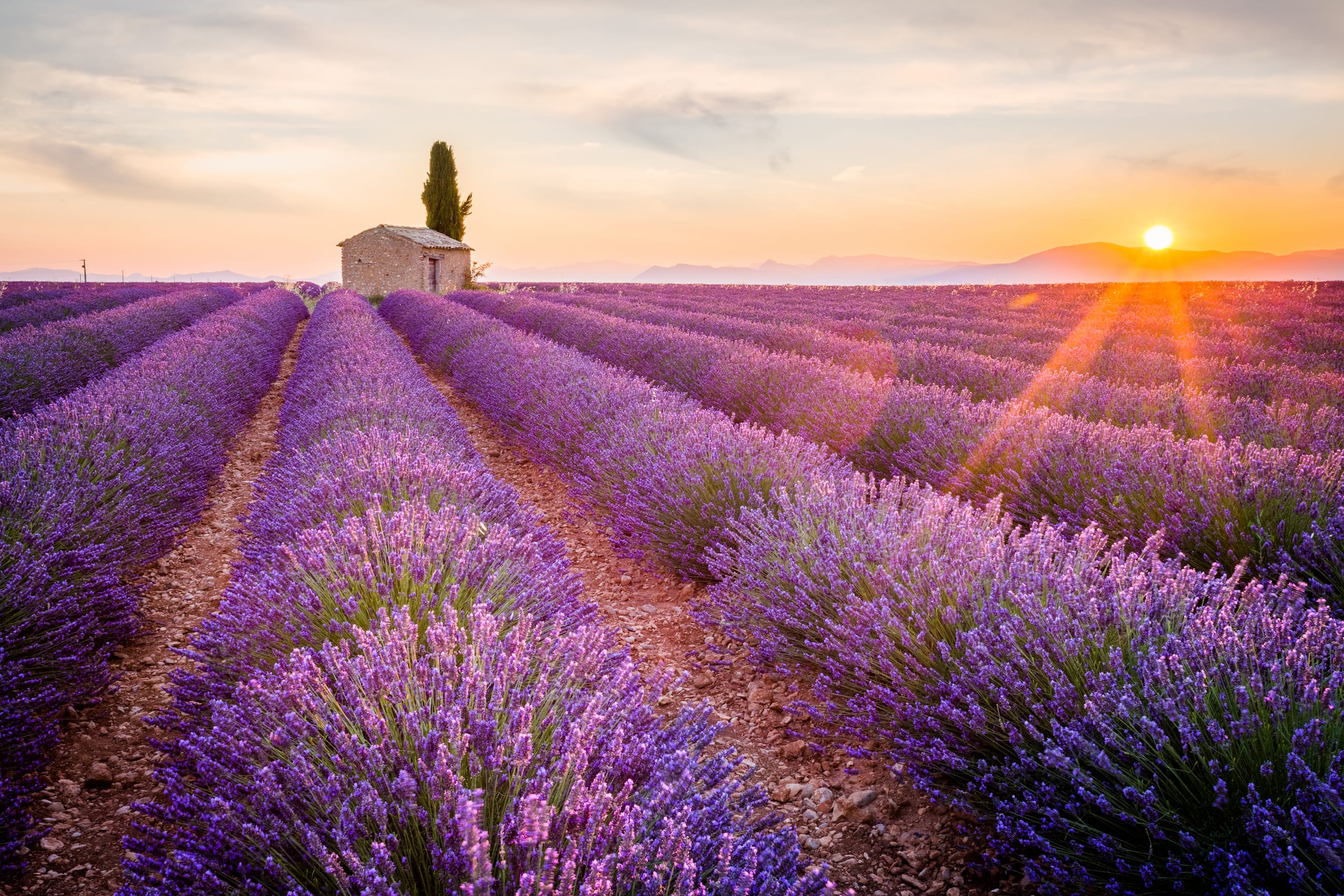
Aix en Provence
Aix en Provence is a warm city baked into the Provence-Alpes-Côte region of Southern France. Often referred to as simply ‘Aix’, this city is a starting point for traveling the Provencal region. Aix is set amongst a backdrop of rambling vineyards, quaint villages, and the imposing Sainte-Victoire mountain range. It’s no surprise that artists like Cézanne have devoted lifetimes to painting this landscape. Aromatic lavender fields in the north blossom once a year with a scent that defines the French countryside. Head south and you’ll find the rocky Mediterranean shore with dramatic Calanques cliffs and clear blue waters. With the sun out nearly all year round, locals live the epitome of the Mediterranean lifestyle. Wander through narrow medieval streets, shop at lively marketplaces, and enjoy a glass of rosé on a cafe terrace beneath the gentle Provencal sun. From old-world architecture and bubbling fountains to refined galleries and leafy parks, this leisurely city has everything you could ask of a French vacation.
Read More
Learn About Aix en Provence
Build Aix en Provence Trip
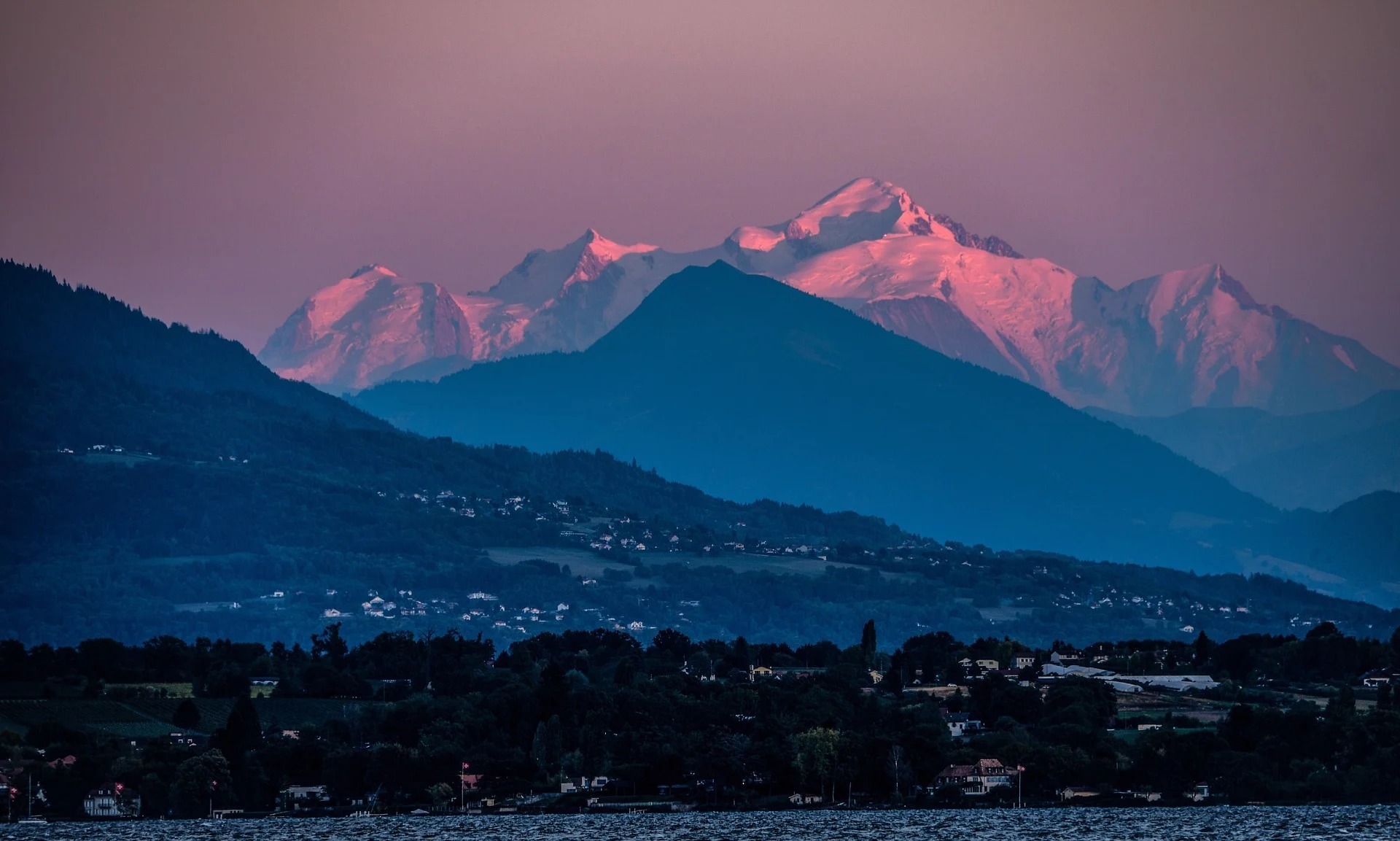
Geneva
Switzerland’s second-most populous city, Geneva is a place where languages, cultures, and institutions have converged for hundreds of years. Here, diplomacy and sophistication play a central role. Formerly home to the headquarters of the UN, Geneva still hosts the International Red Cross, World Trade Organization, and World Health Organization. Lake Geneva, the largest body of water in Switzerland, dominates the surrounding landscape with its calm waters and brooding presence. By the lakeside, the imposing Jet d’Eau blasts water 140 meters into the air for most of every day. As you stroll through the city’s enchanting old town, you'll find its winding streets dusted with antique shops, ancient architecture, galleries, and world-class restaurants. Centuries of influence from countless cultures have given Geneva a special, complex identity. Travelers here can spend hours sampling food and drink from across the world. Or, simply sit by the water, and sip an Espresso while you soak up Geneva's unique and cosmopolitan vibe.
Read More
Learn About Geneva
Build Geneva Trip

Brussels
It feels as though everything in Brussels is tinted with gold. From the gilded rooftops of the old houses on the Grand Palace to the foil-wrapped bonbons piled in chocolatier windows, Brussels seems to sparkle and wink at you around every corner. Aside from the lustrous architecture and Trappist ales, this shiny city is probably still best known for its iconic street food options: salty, golden fries, and fluffy, honey-colored waffles. While a major political center, home of the EU and NATO, don’t be fooled by Brussels stern ‘Eurocratic’ facade. Brussels revels in cheeky humor and mischief. So much so, Brussel’s beloved mascot, the ‘Manneken Pis’, is a statue of a small child urinating into a fountain. The city takes great pleasure in dressing this statue in festive-themed costumes. It’s no surprise that the artist Magritte, one of the great visual tricksters of the 20th century, called Brussels home. After a few days exploring the city, and taking in its sights and scenes, you’re sure to come away smiling.
Read More
Learn About Brussels
Build Brussels Trip
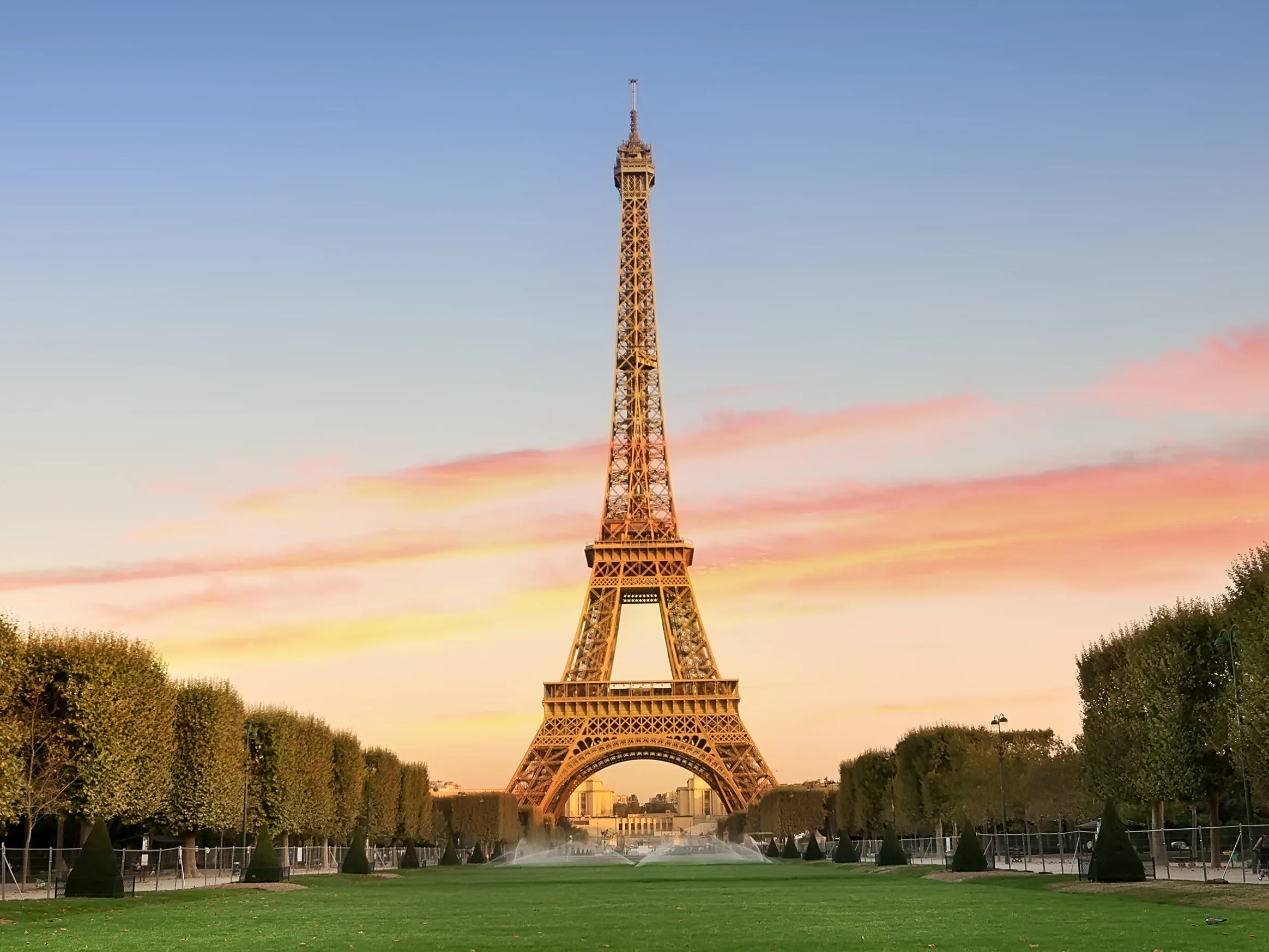
Paris
The magic of Paris is undeniable. This is the most romantic destination in Europe, and surely the number one bucket list destination of all time. If you want to say you've traveled, you have to visit Paris at least once. Along with classic must-sees like the Eiffel Tower and the Sacre-Coeur, there is so much to see and do in Paris that it helps to narrow it down by interest. Fashion and shopping enthusiast? Look no further than the Galeries Lafayette, Avenue des Champs-Élysées, or the Marais. Art aficionado? Once you're done with the Louvre, make a start on the Musée d'Orsay. History buffs won't be able to walk a block without uncovering a monument to Napoleon or Louis XIV. If you visit Paris with a foodie, be warned — you'll gaze in a lot of patisserie windows, and sample your weight in croissants. Because Paris always has so much on offer, it never grows old. At dusk, as you stroll the wide boulevards past Haussmann apartment buildings and sharply dressed Parisians, or gaze down at the city from the hill at Montmarte, you might find yourself saying 'Paris Je t' aime'. This is, after all, the City of Love.
Read More
Learn About Paris
Build Paris Trip

Bayeux
Bayeux is an old, well-preserved town in Normandy. Most known as the backdrop for the Battle of Normandy, visitors who descend from WWII veterans often feel a special, somber connection to this part of France. On June 6, 1944, otherwise known as ‘D-Day’, thousands of Allied troops landed on Normandy’s Atlantic Coast, with a mission to drive out the German occupying forces. More than 120,000 Allied soldiers died in combat over the next three months. Although victorious, the campaign for Normandy caused the highest number of losses for America in all of WWII. A landscape of remembrance, on a tour of the Norman countryside you’ll see the remains of tanks, aircraft, and military bunkers. Special cemeteries and memorials in the area pay tribute to the sacrifice of fallen soldiers. Despite the destruction of nearly every neighboring village, the town of Bayeux endured WWII unscathed. Along with all its medieval architecture, the town’s most precious treasure, the Bayeux Tapestry, was miraculously spared. Stitched in the 11th century, the Tapestry tells the story of William the Conqueror’s invasion of England in 1066. As you view the tapestry and stroll through the charming streets of Bayeux, the sweeping cathedral spires and gently flowing River Aure cast you back to another time. A landscape of war, but also remembrance, a trip to Bayeux and Normandy will deepen your appreciation and respect for the past.
Read More
Learn About Bayeux
Build Bayeux Trip
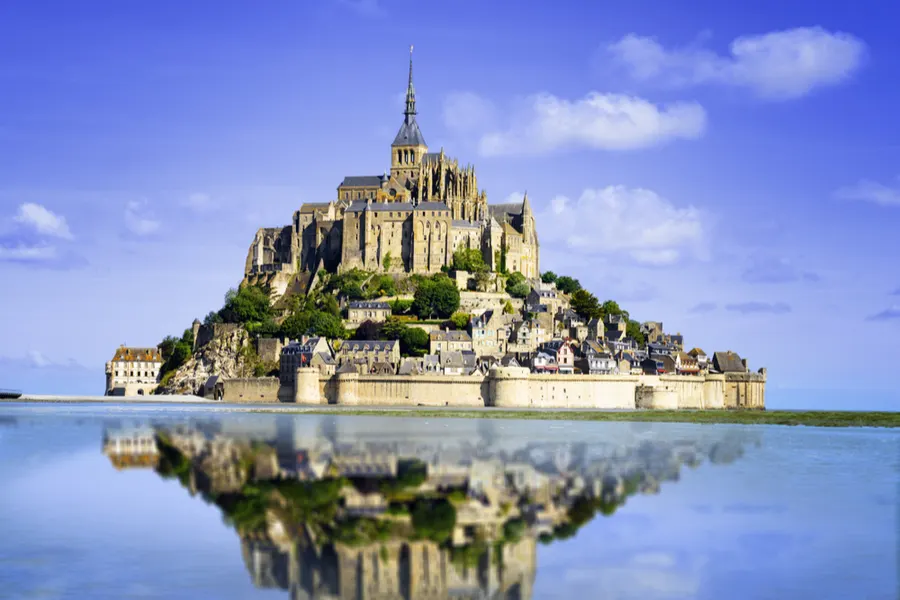
Rennes
Rennes is the capital of Brittany, the most northwest region in France. A sea and countryside getaway, Brittany is famous for its medieval towns, ancient rocky landscapes, and seaside villages. Dotted along the blue-green Atlantic coastline, towns like St. Malo, Dinard, and Cancale are long-time summer vacation spots for the French. Needless to say, you have to try the fresh seafood. Offshore, the island of Mont-Saint-Michel rests dreamily amongst the waves. One of the most beloved UNESCO heritage sites in France, this medieval abbey is connected to the mainland by a bridge over a causeway. Heading inland, there are centuries-old churches, stone cottages, and castles that belonged to Brittany’s medieval royalty, who were known for constantly feuding over successions. The river town of Dinan is surrounded by a fortress wall, a must-see for both its history and profound beauty. In Rennes, half-timbered houses and cobbled streets give way to some of the oldest marketplaces in France. Rennes itself is a tranquil, medium-sized city, easily explored in half a day. In the evening, the city’s gastronomic scene invites you to try local specialties - pancakes, such as savory stuffed galettes and thin, lemony crêpes, are the order of the day here.
Read More
Learn About Rennes
Build Rennes Trip

Aix en Provence
Aix en Provence is a warm city baked into the Provence-Alpes-Côte region of Southern France. Often referred to as simply ‘Aix’, this city is a starting point for traveling the Provencal region. Aix is set amongst a backdrop of rambling vineyards, quaint villages, and the imposing Sainte-Victoire mountain range. It’s no surprise that artists like Cézanne have devoted lifetimes to painting this landscape. Aromatic lavender fields in the north blossom once a year with a scent that defines the French countryside. Head south and you’ll find the rocky Mediterranean shore with dramatic Calanques cliffs and clear blue waters. With the sun out nearly all year round, locals live the epitome of the Mediterranean lifestyle. Wander through narrow medieval streets, shop at lively marketplaces, and enjoy a glass of rosé on a cafe terrace beneath the gentle Provencal sun. From old-world architecture and bubbling fountains to refined galleries and leafy parks, this leisurely city has everything you could ask of a French vacation.
Read More
Learn About Aix en Provence
Build Aix en Provence Trip

Geneva
Switzerland’s second-most populous city, Geneva is a place where languages, cultures, and institutions have converged for hundreds of years. Here, diplomacy and sophistication play a central role. Formerly home to the headquarters of the UN, Geneva still hosts the International Red Cross, World Trade Organization, and World Health Organization. Lake Geneva, the largest body of water in Switzerland, dominates the surrounding landscape with its calm waters and brooding presence. By the lakeside, the imposing Jet d’Eau blasts water 140 meters into the air for most of every day. As you stroll through the city’s enchanting old town, you'll find its winding streets dusted with antique shops, ancient architecture, galleries, and world-class restaurants. Centuries of influence from countless cultures have given Geneva a special, complex identity. Travelers here can spend hours sampling food and drink from across the world. Or, simply sit by the water, and sip an Espresso while you soak up Geneva's unique and cosmopolitan vibe.
Read More
Learn About Geneva
Build Geneva Trip

Brussels
It feels as though everything in Brussels is tinted with gold. From the gilded rooftops of the old houses on the Grand Palace to the foil-wrapped bonbons piled in chocolatier windows, Brussels seems to sparkle and wink at you around every corner. Aside from the lustrous architecture and Trappist ales, this shiny city is probably still best known for its iconic street food options: salty, golden fries, and fluffy, honey-colored waffles. While a major political center, home of the EU and NATO, don’t be fooled by Brussels stern ‘Eurocratic’ facade. Brussels revels in cheeky humor and mischief. So much so, Brussel’s beloved mascot, the ‘Manneken Pis’, is a statue of a small child urinating into a fountain. The city takes great pleasure in dressing this statue in festive-themed costumes. It’s no surprise that the artist Magritte, one of the great visual tricksters of the 20th century, called Brussels home. After a few days exploring the city, and taking in its sights and scenes, you’re sure to come away smiling.
Read More
Learn About Brussels
Build Brussels Trip

Paris
The magic of Paris is undeniable. This is the most romantic destination in Europe, and surely the number one bucket list destination of all time. If you want to say you've traveled, you have to visit Paris at least once. Along with classic must-sees like the Eiffel Tower and the Sacre-Coeur, there is so much to see and do in Paris that it helps to narrow it down by interest. Fashion and shopping enthusiast? Look no further than the Galeries Lafayette, Avenue des Champs-Élysées, or the Marais. Art aficionado? Once you're done with the Louvre, make a start on the Musée d'Orsay. History buffs won't be able to walk a block without uncovering a monument to Napoleon or Louis XIV. If you visit Paris with a foodie, be warned — you'll gaze in a lot of patisserie windows, and sample your weight in croissants. Because Paris always has so much on offer, it never grows old. At dusk, as you stroll the wide boulevards past Haussmann apartment buildings and sharply dressed Parisians, or gaze down at the city from the hill at Montmarte, you might find yourself saying 'Paris Je t' aime'. This is, after all, the City of Love.
Read More
Learn About Paris
Build Paris Trip

Bayeux
Bayeux is an old, well-preserved town in Normandy. Most known as the backdrop for the Battle of Normandy, visitors who descend from WWII veterans often feel a special, somber connection to this part of France. On June 6, 1944, otherwise known as ‘D-Day’, thousands of Allied troops landed on Normandy’s Atlantic Coast, with a mission to drive out the German occupying forces. More than 120,000 Allied soldiers died in combat over the next three months. Although victorious, the campaign for Normandy caused the highest number of losses for America in all of WWII. A landscape of remembrance, on a tour of the Norman countryside you’ll see the remains of tanks, aircraft, and military bunkers. Special cemeteries and memorials in the area pay tribute to the sacrifice of fallen soldiers. Despite the destruction of nearly every neighboring village, the town of Bayeux endured WWII unscathed. Along with all its medieval architecture, the town’s most precious treasure, the Bayeux Tapestry, was miraculously spared. Stitched in the 11th century, the Tapestry tells the story of William the Conqueror’s invasion of England in 1066. As you view the tapestry and stroll through the charming streets of Bayeux, the sweeping cathedral spires and gently flowing River Aure cast you back to another time. A landscape of war, but also remembrance, a trip to Bayeux and Normandy will deepen your appreciation and respect for the past.
Read More
Learn About Bayeux
Build Bayeux Trip

Rennes
Rennes is the capital of Brittany, the most northwest region in France. A sea and countryside getaway, Brittany is famous for its medieval towns, ancient rocky landscapes, and seaside villages. Dotted along the blue-green Atlantic coastline, towns like St. Malo, Dinard, and Cancale are long-time summer vacation spots for the French. Needless to say, you have to try the fresh seafood. Offshore, the island of Mont-Saint-Michel rests dreamily amongst the waves. One of the most beloved UNESCO heritage sites in France, this medieval abbey is connected to the mainland by a bridge over a causeway. Heading inland, there are centuries-old churches, stone cottages, and castles that belonged to Brittany’s medieval royalty, who were known for constantly feuding over successions. The river town of Dinan is surrounded by a fortress wall, a must-see for both its history and profound beauty. In Rennes, half-timbered houses and cobbled streets give way to some of the oldest marketplaces in France. Rennes itself is a tranquil, medium-sized city, easily explored in half a day. In the evening, the city’s gastronomic scene invites you to try local specialties - pancakes, such as savory stuffed galettes and thin, lemony crêpes, are the order of the day here.
Read More
Learn About Rennes
Build Rennes Trip
prev
next


 Map of Your Itinerary Route
Map of Your Itinerary Route
Zoom In to the cities to see your itinerary in more detail


 4.8
4.8 








